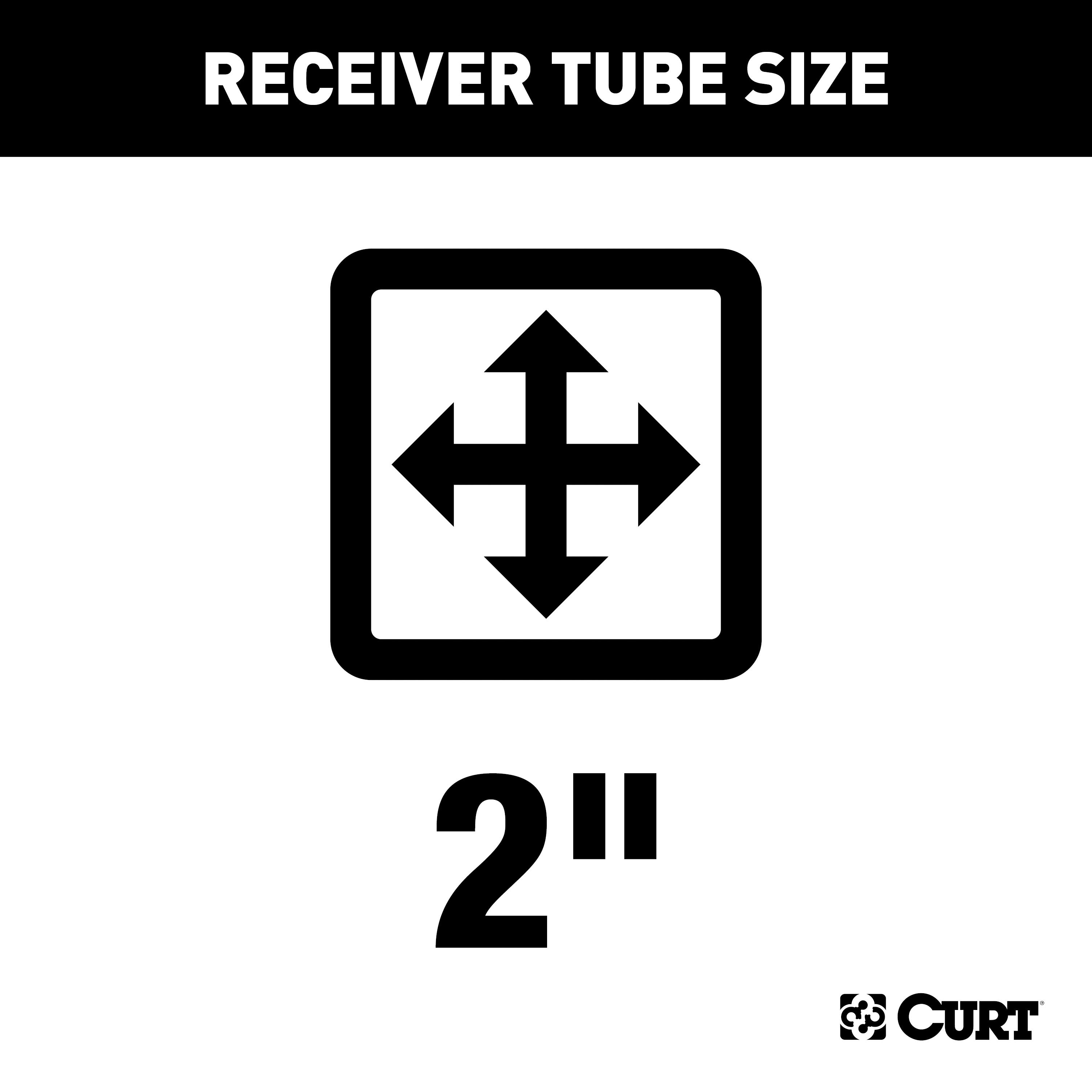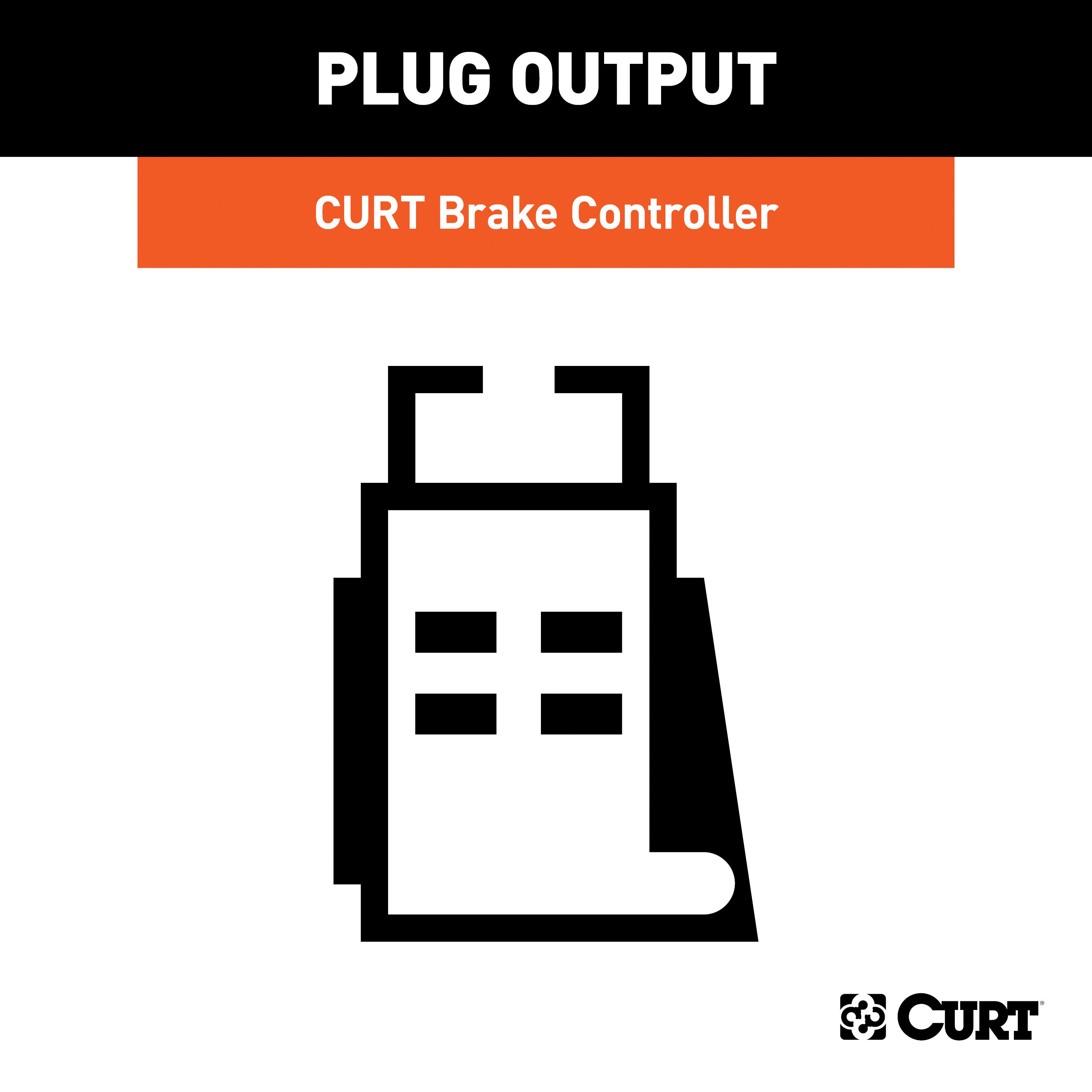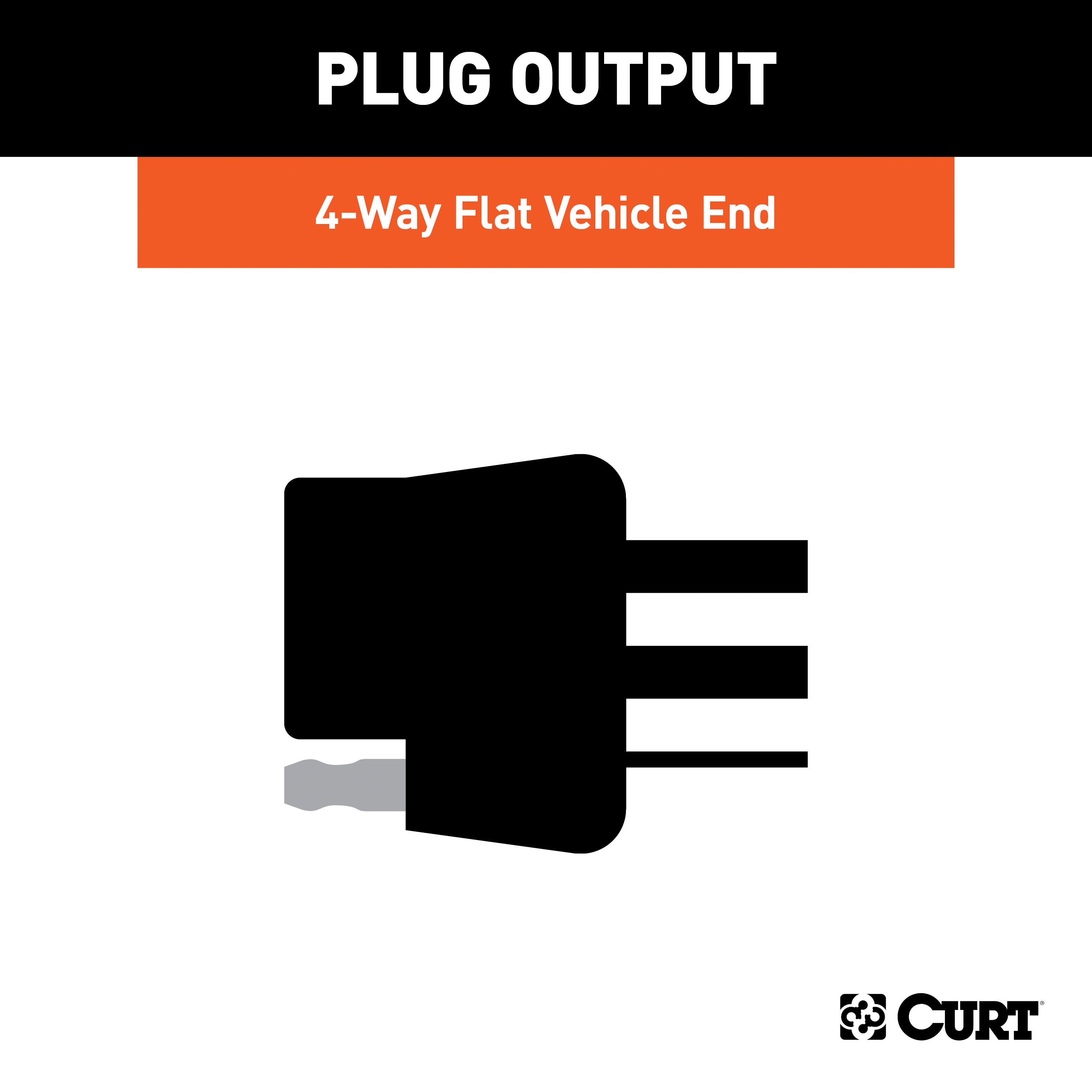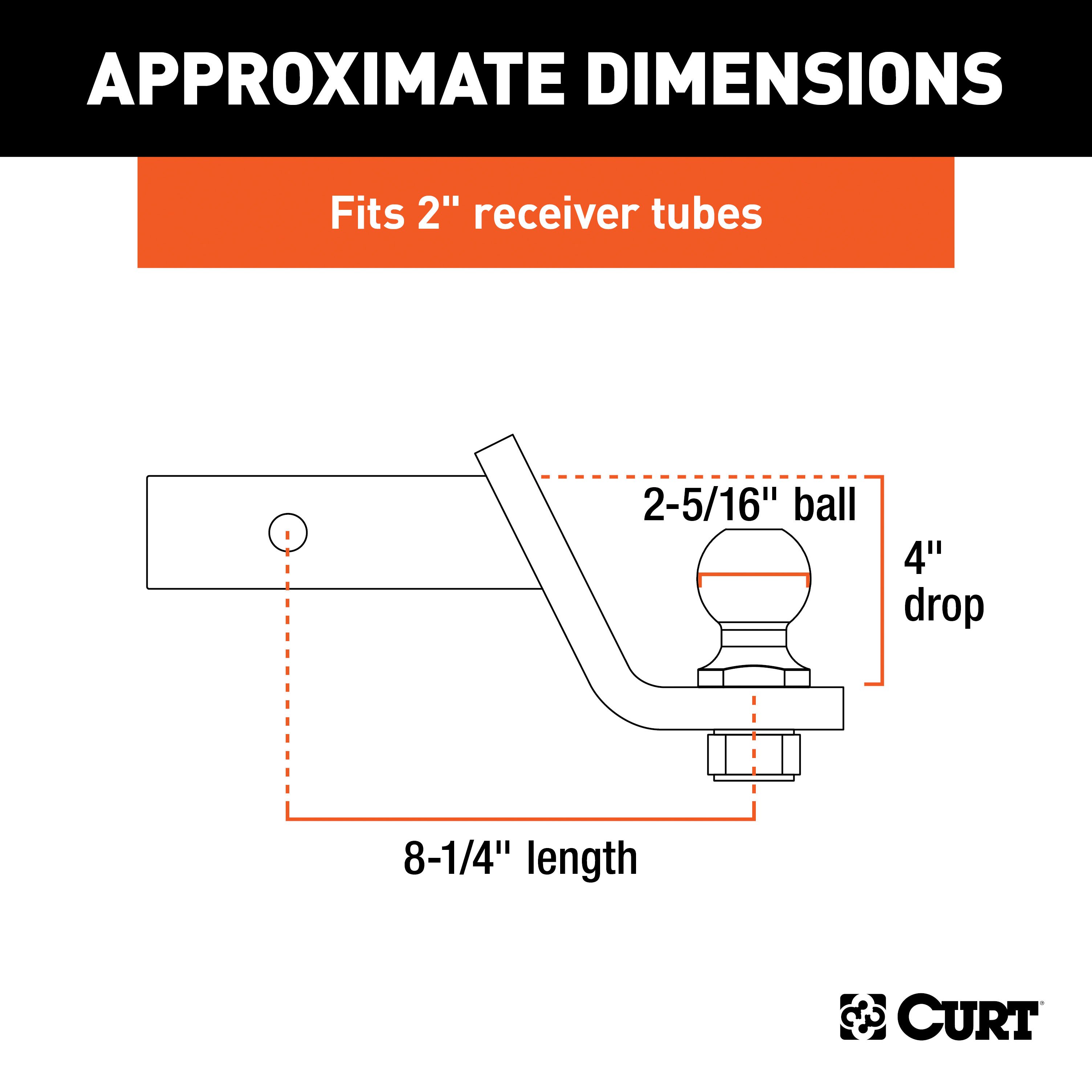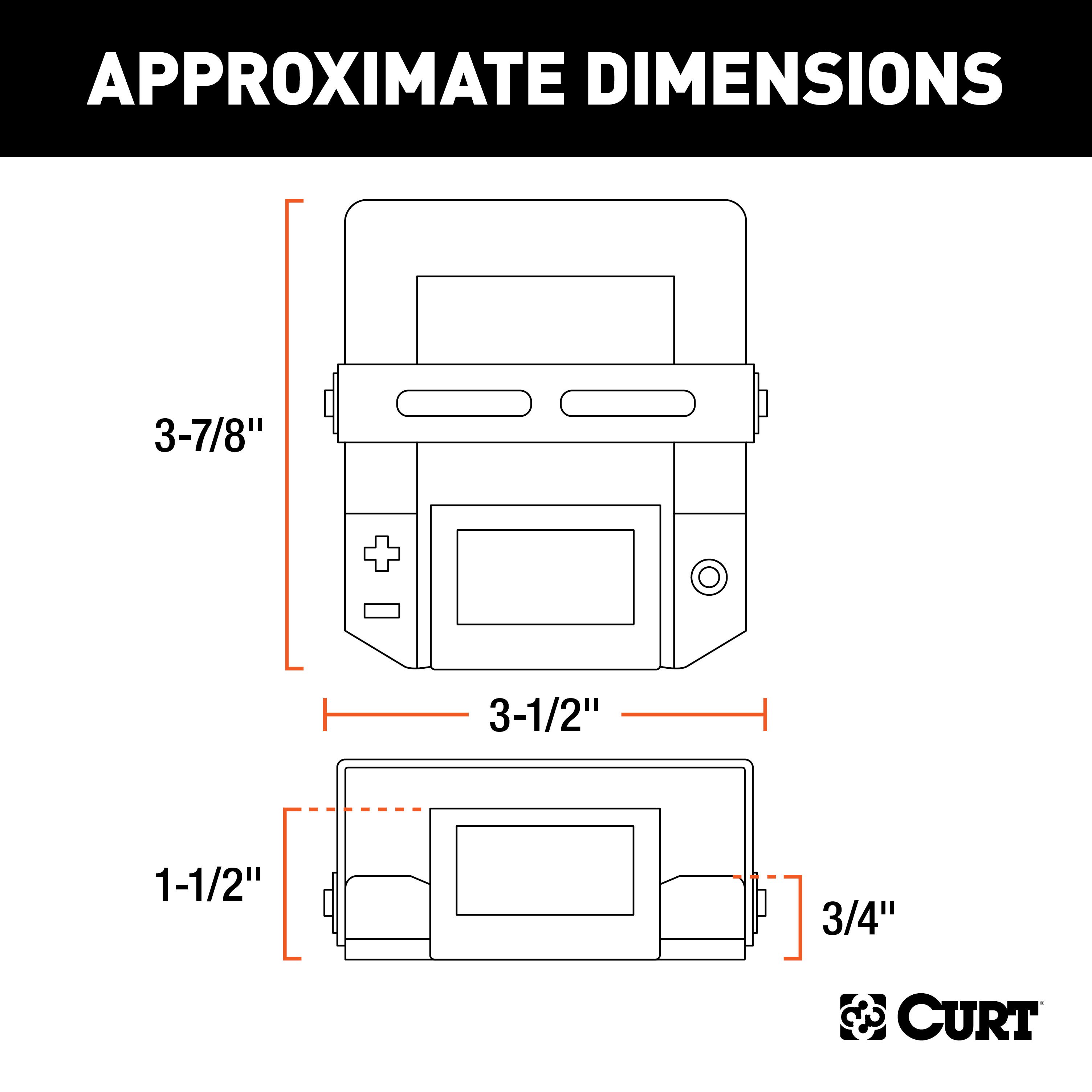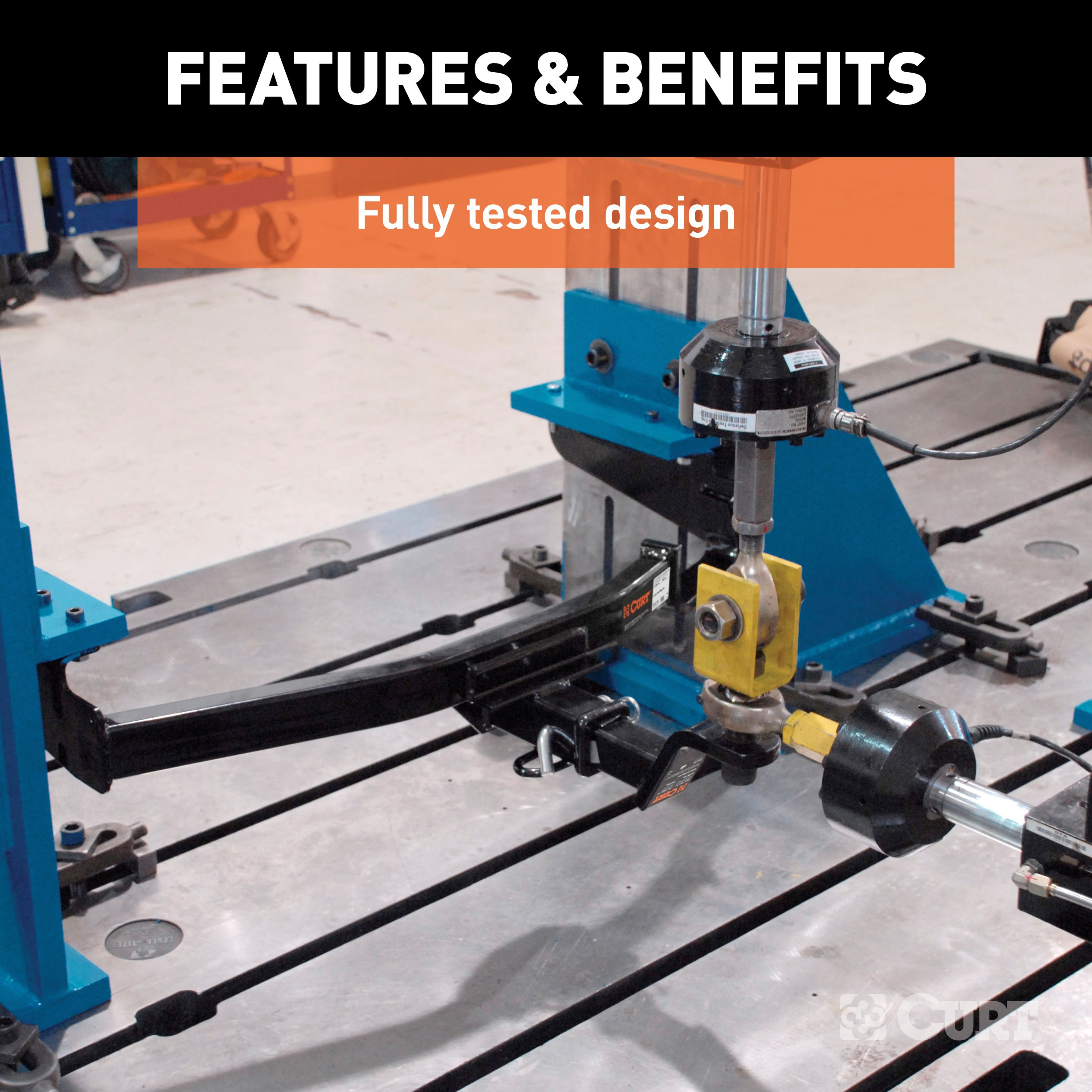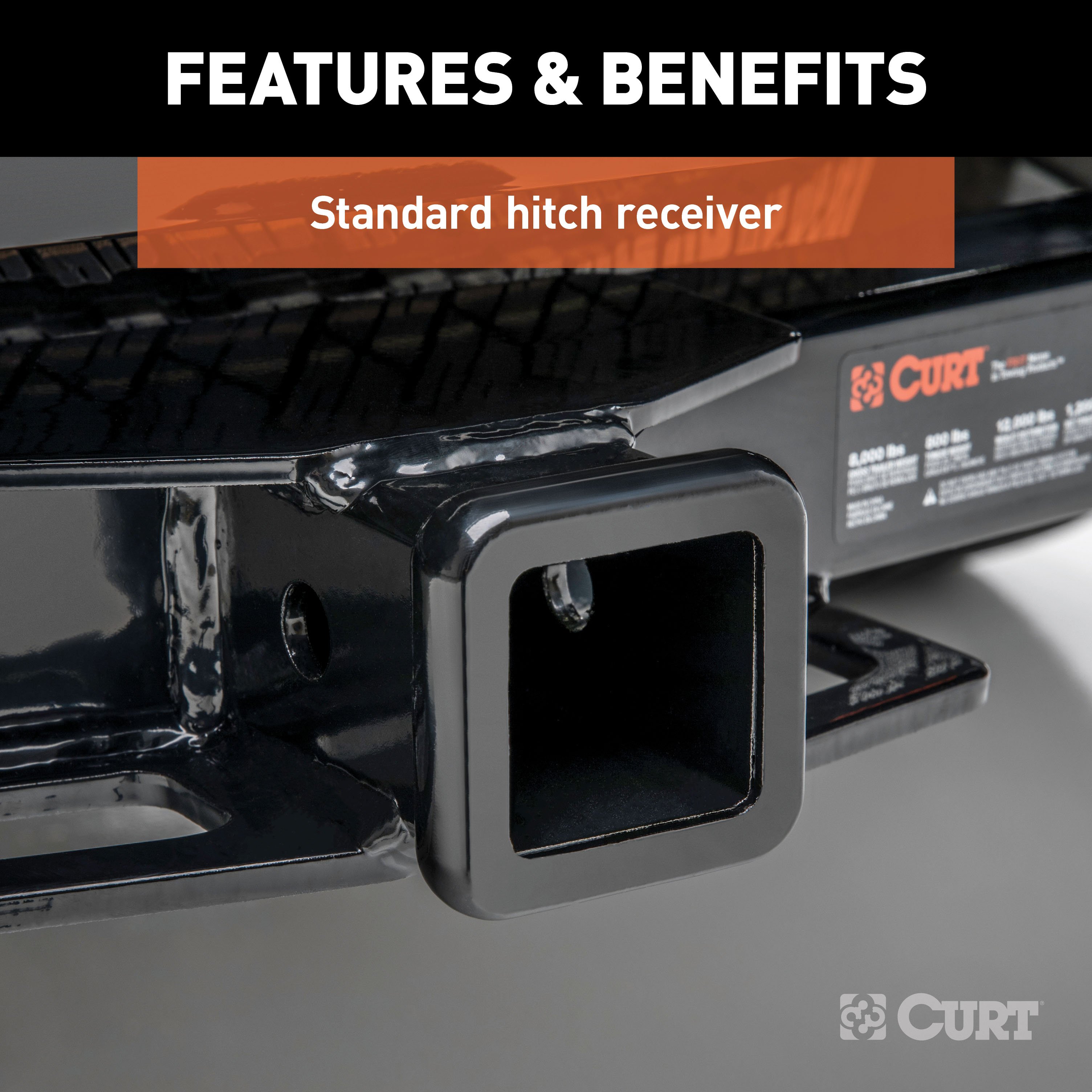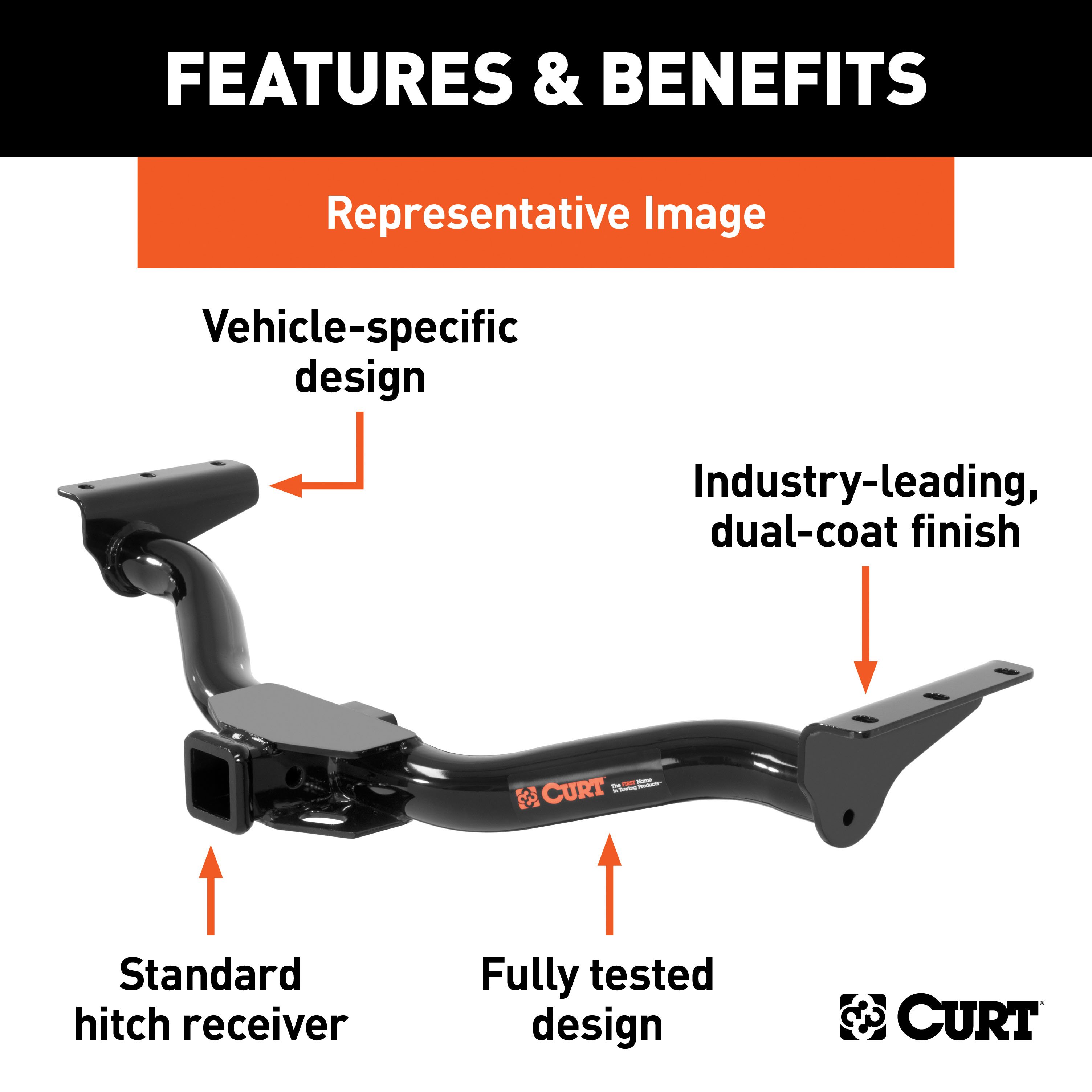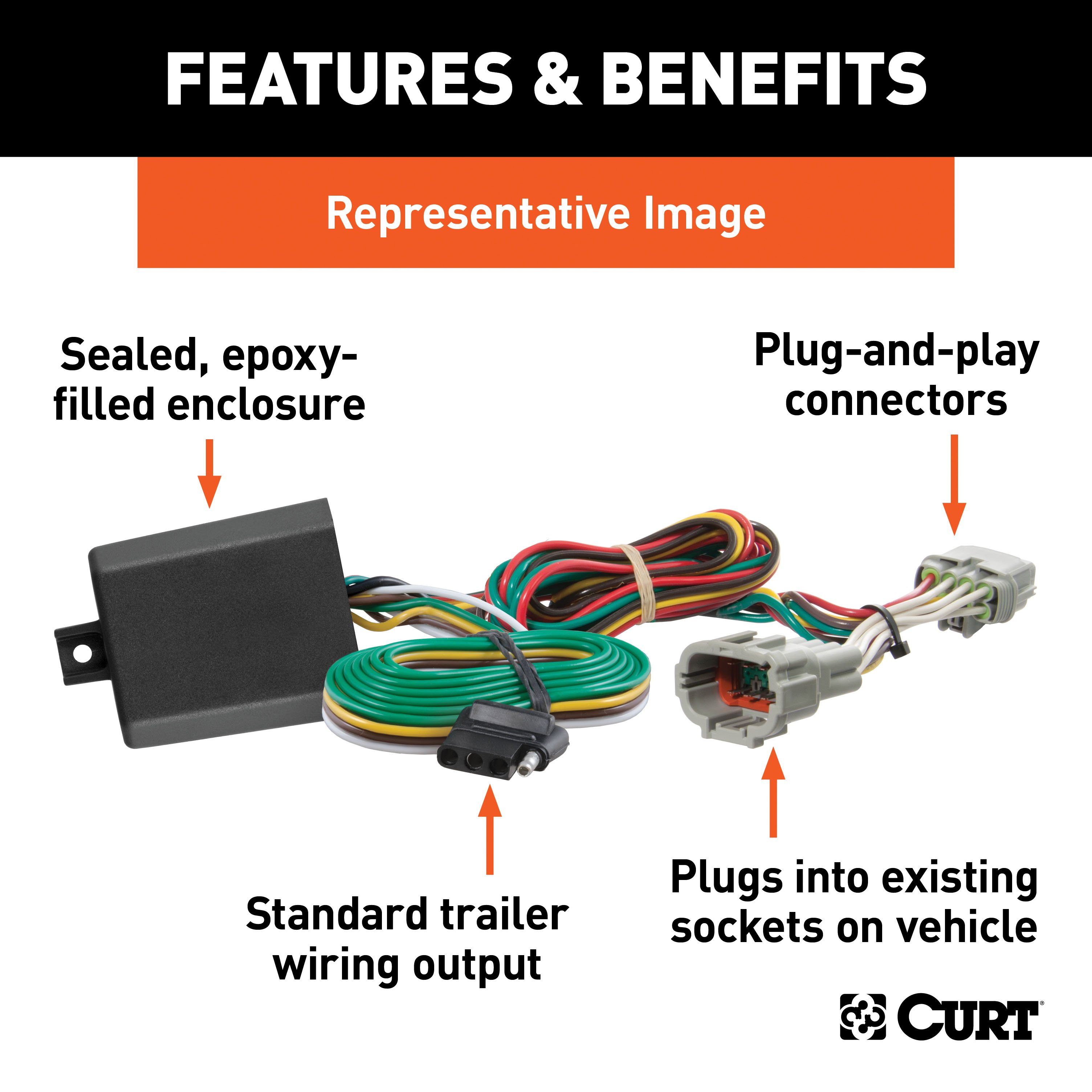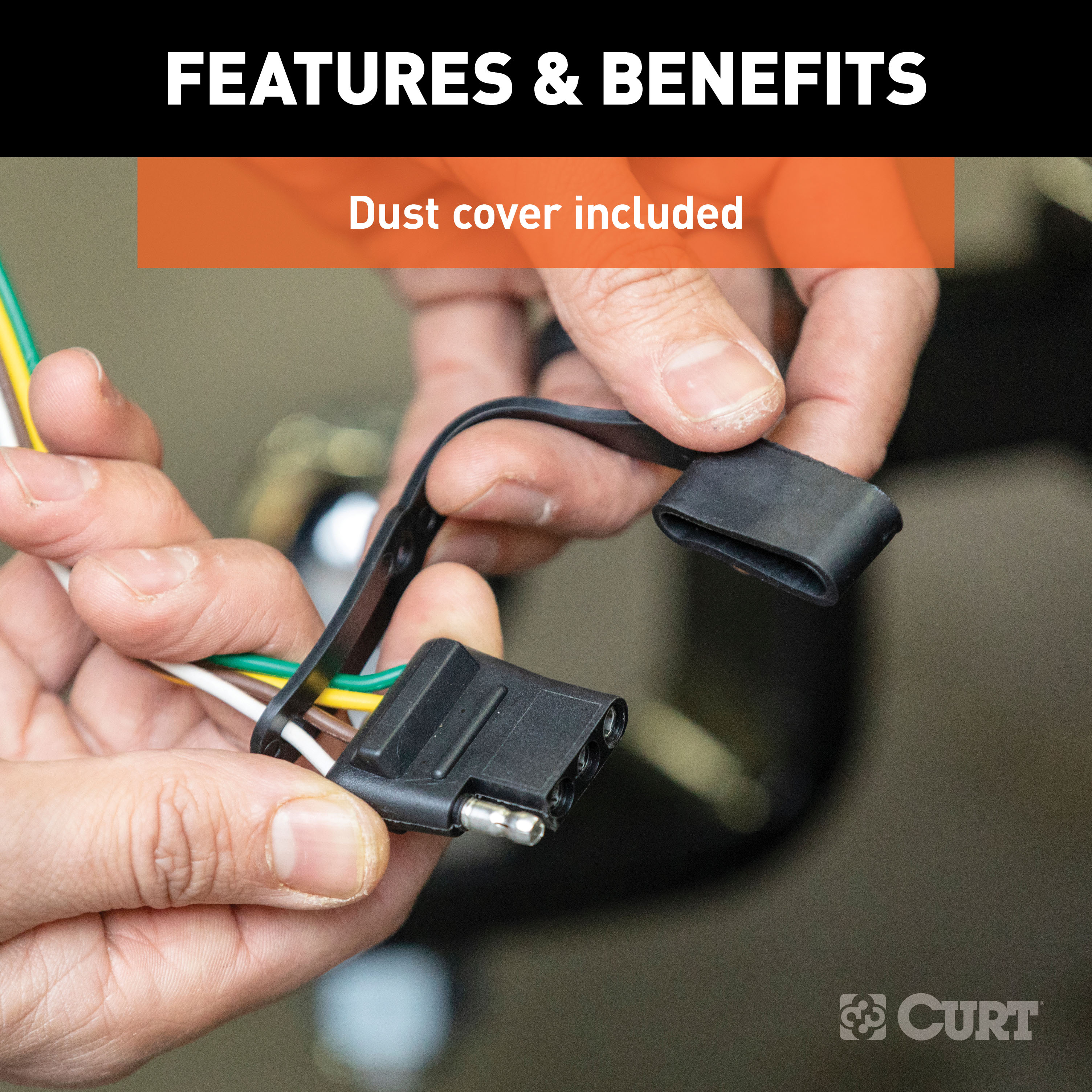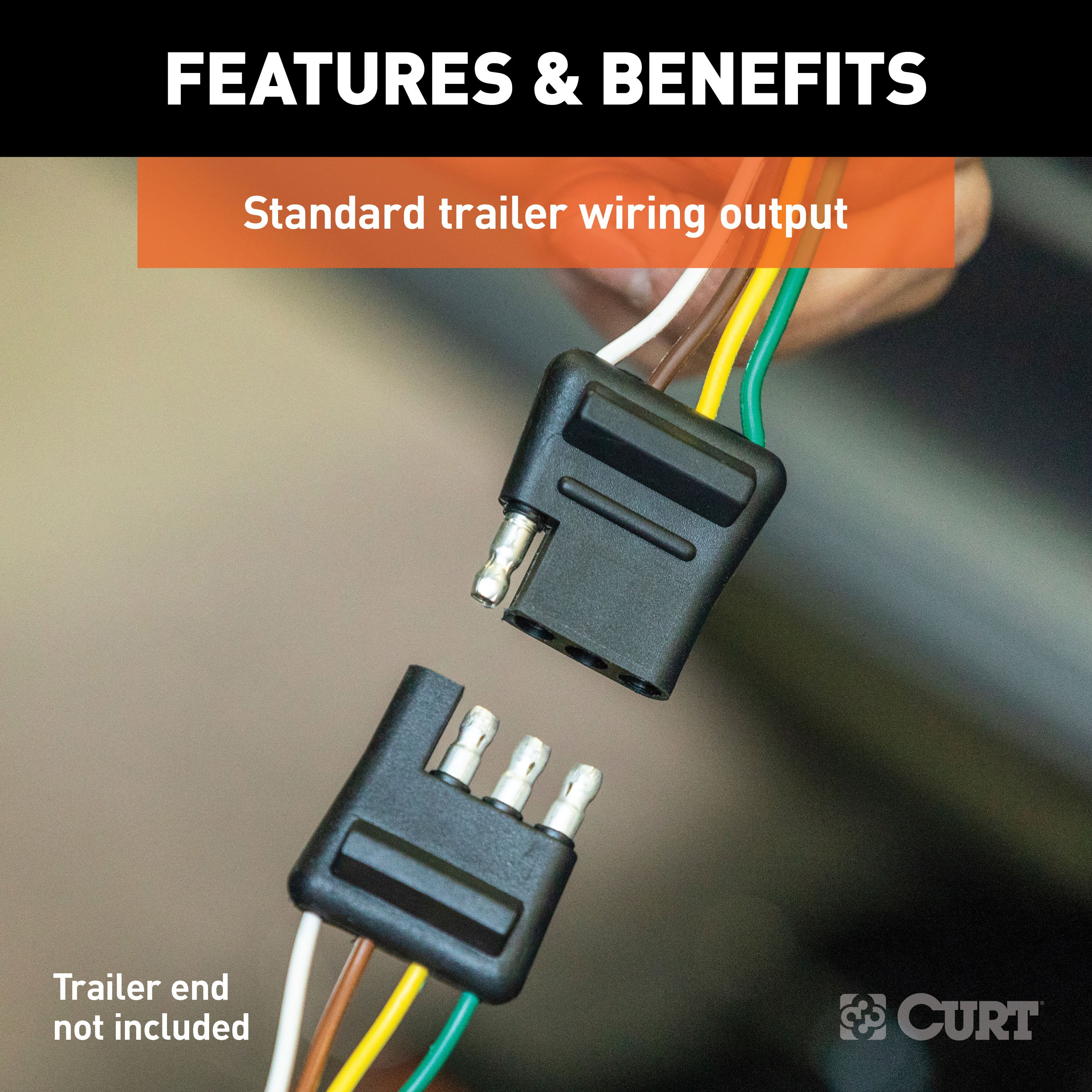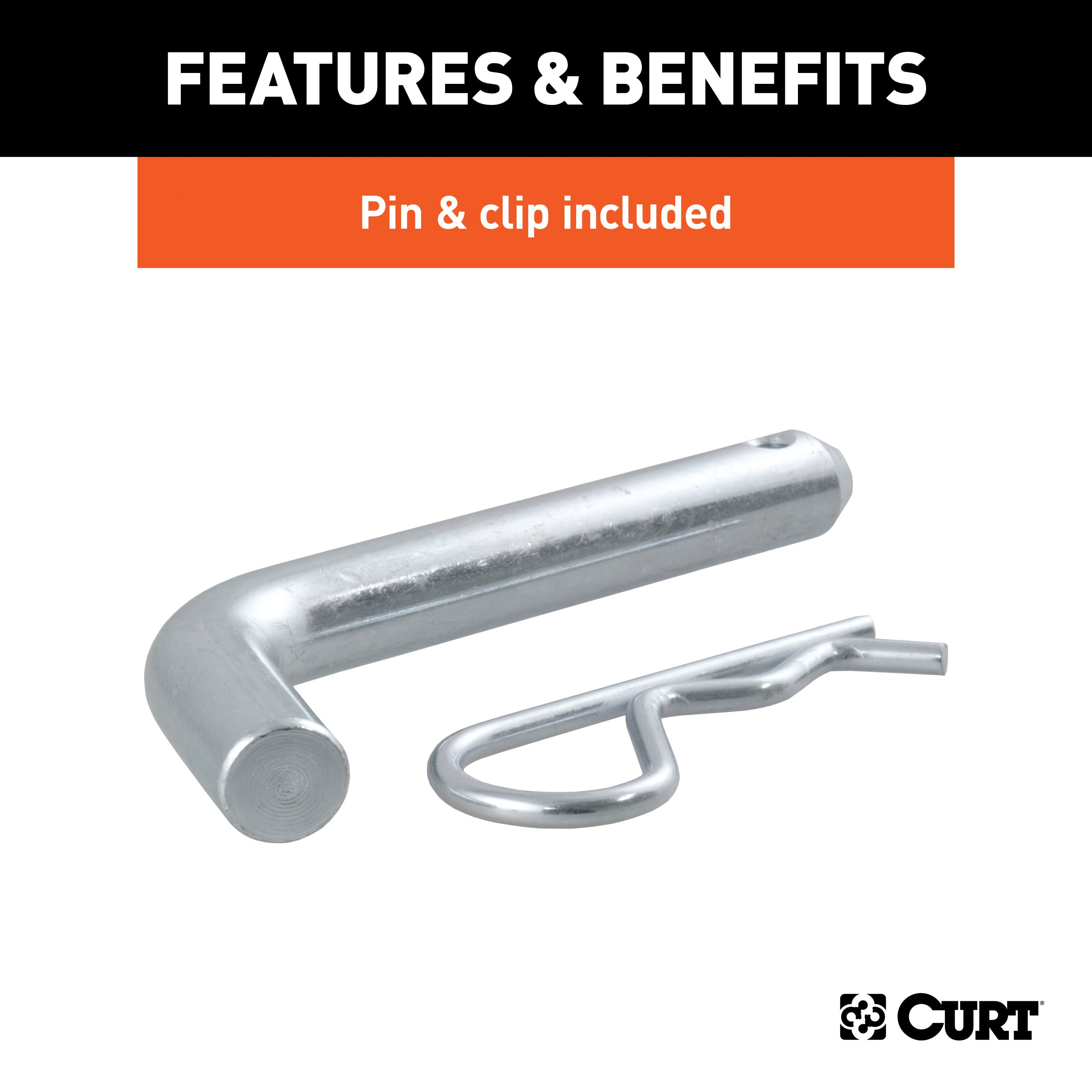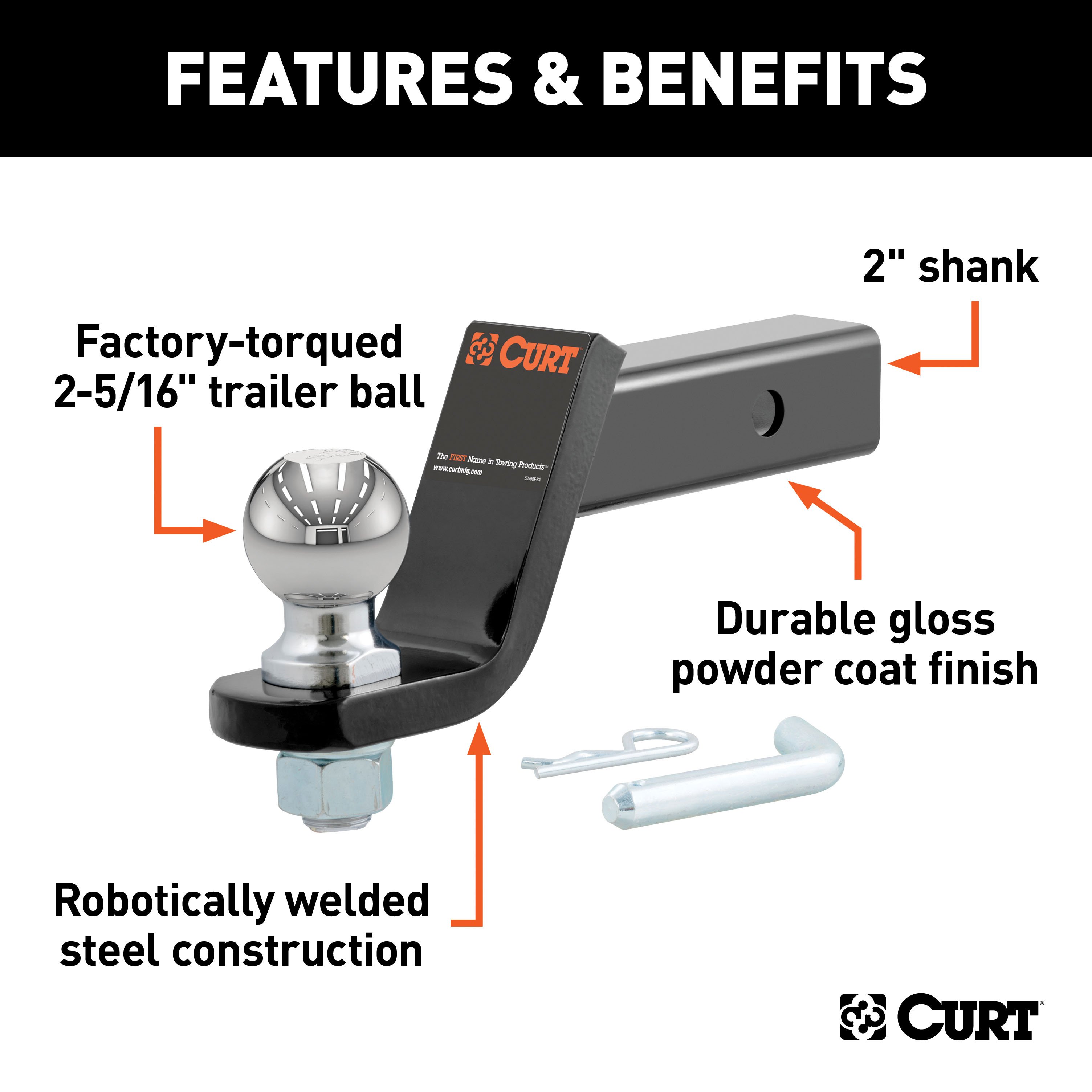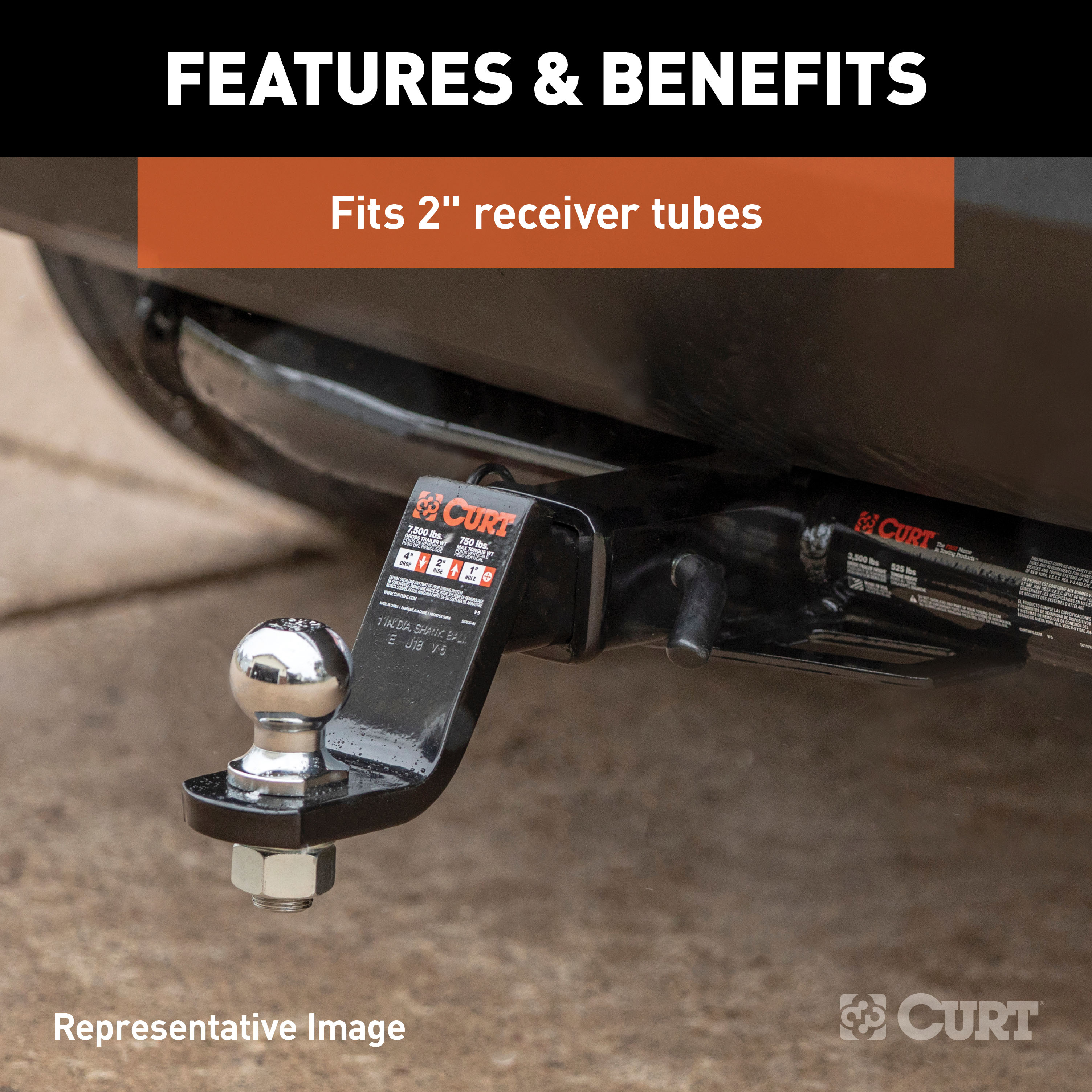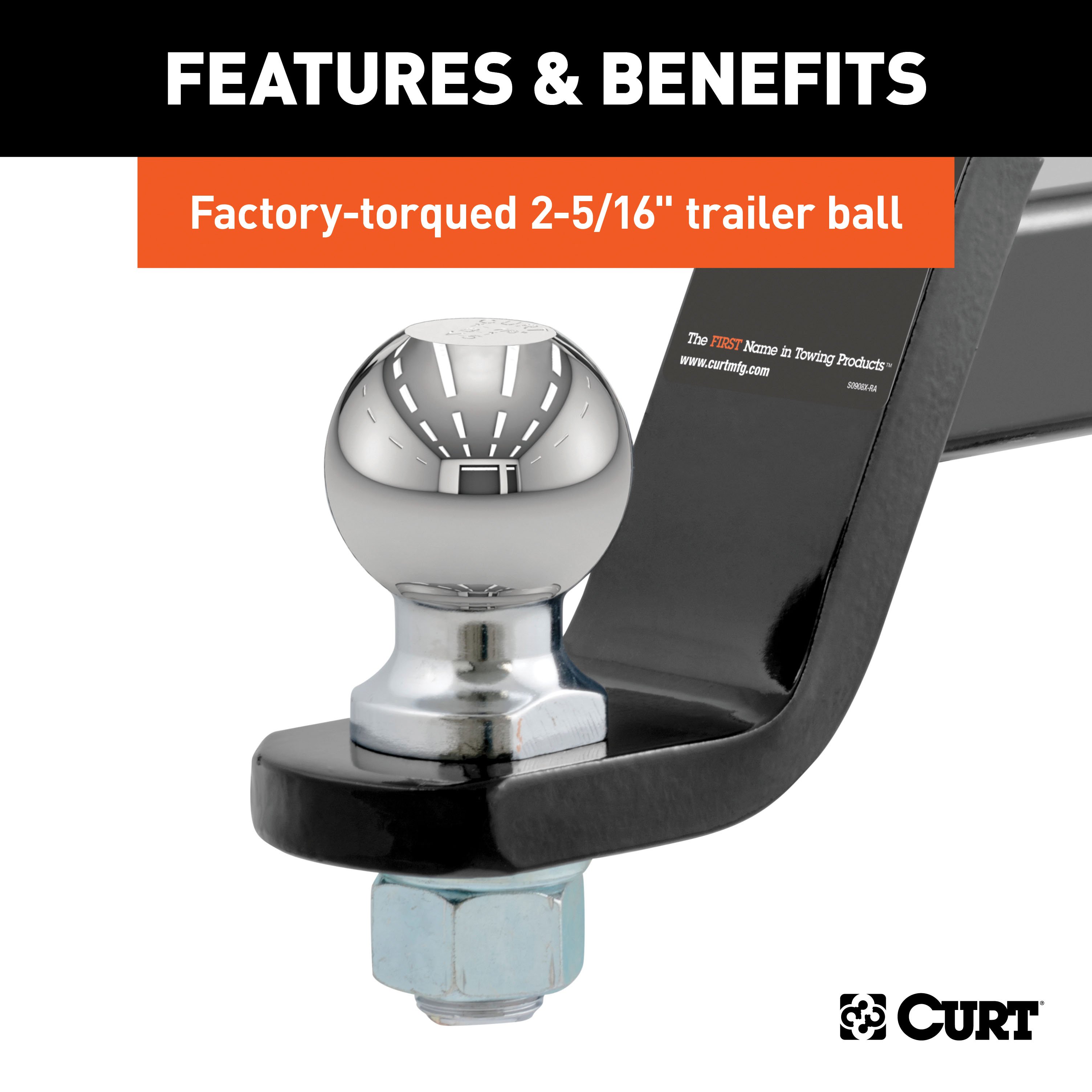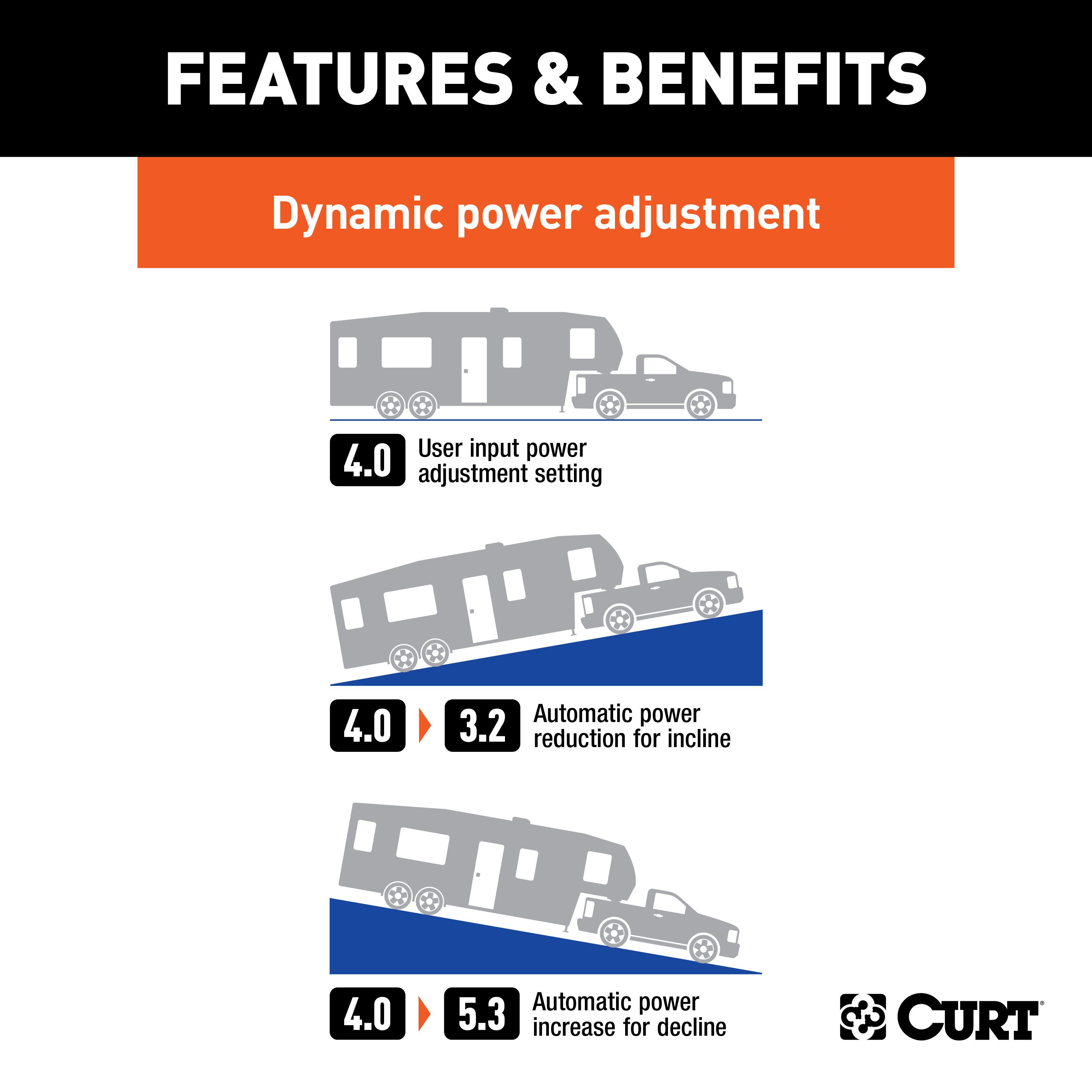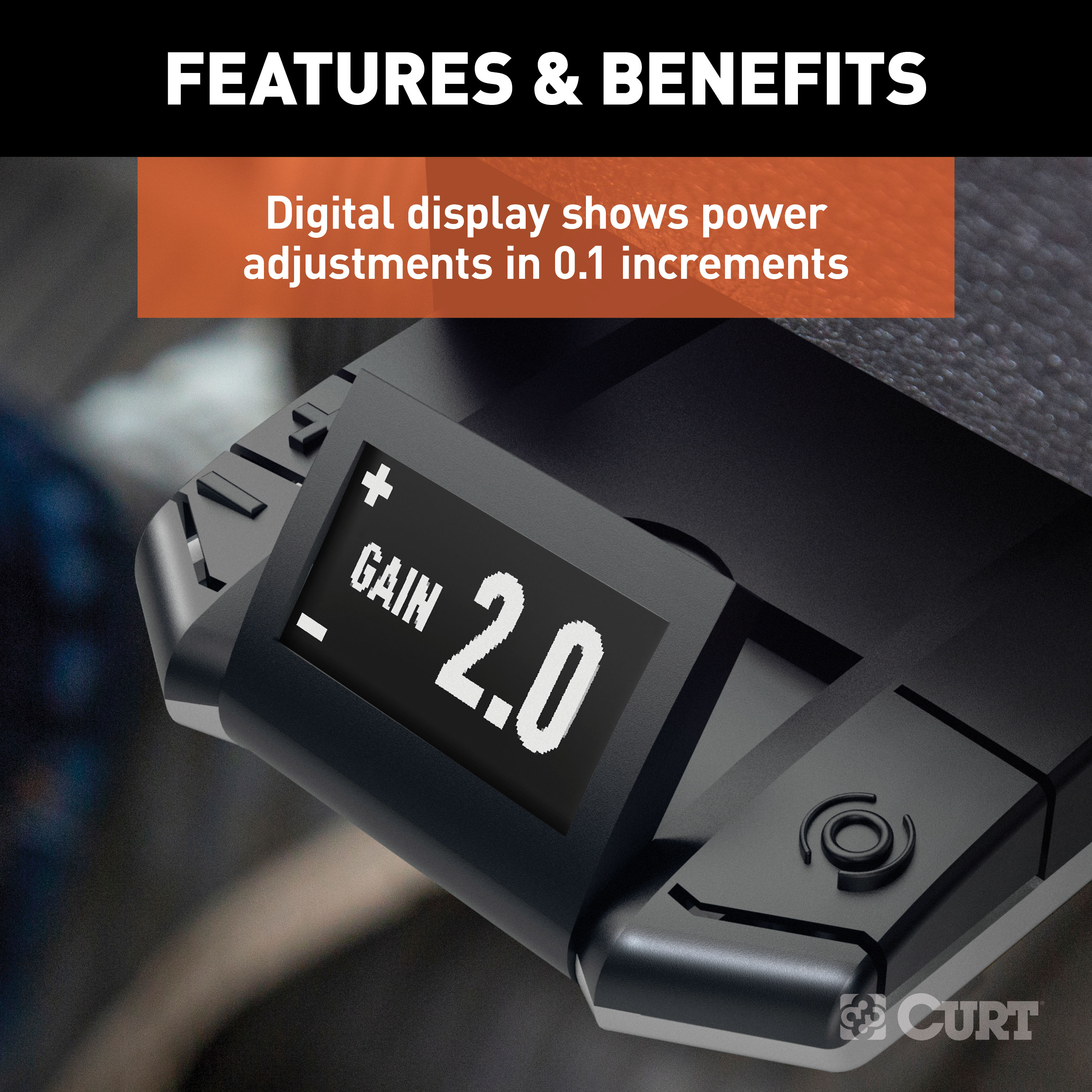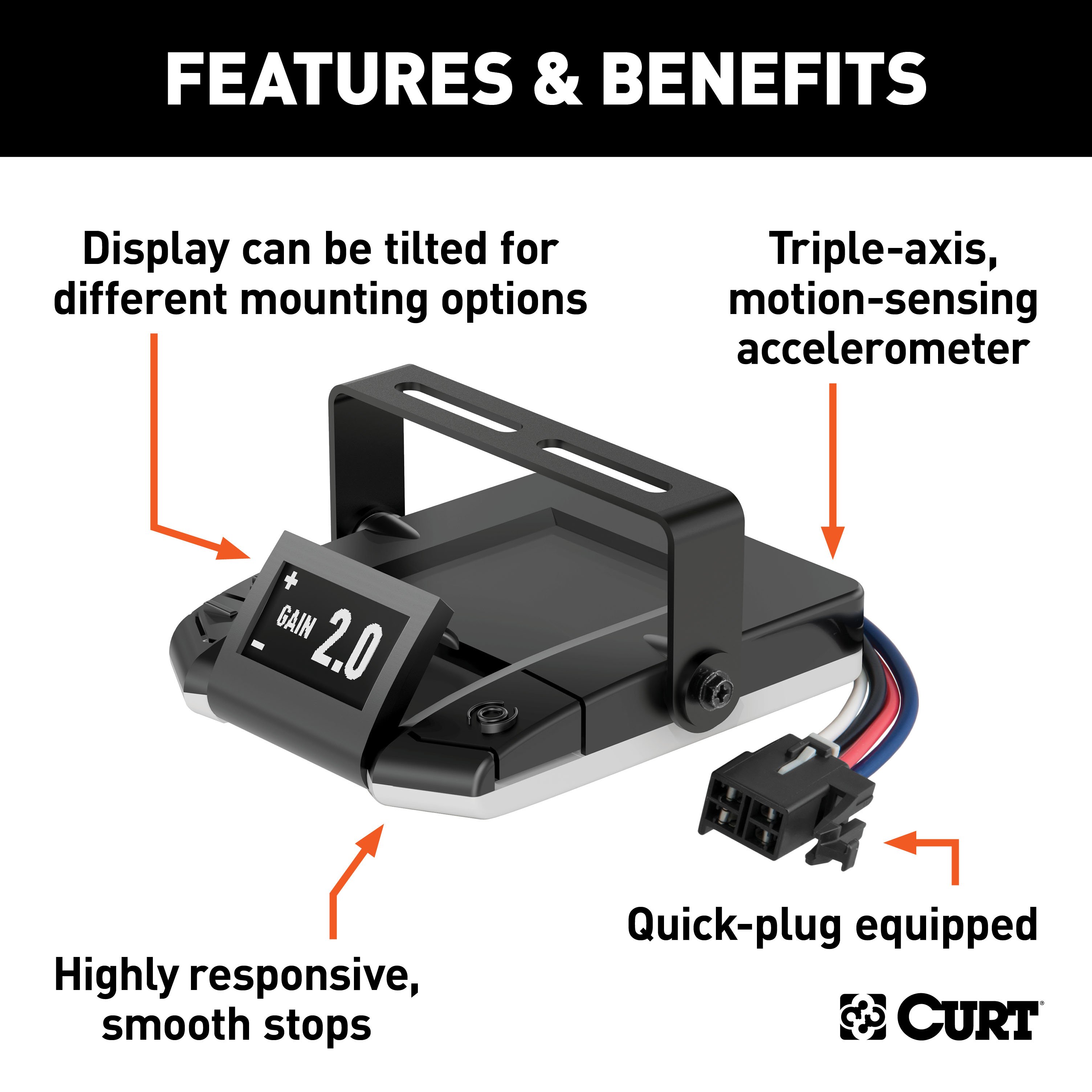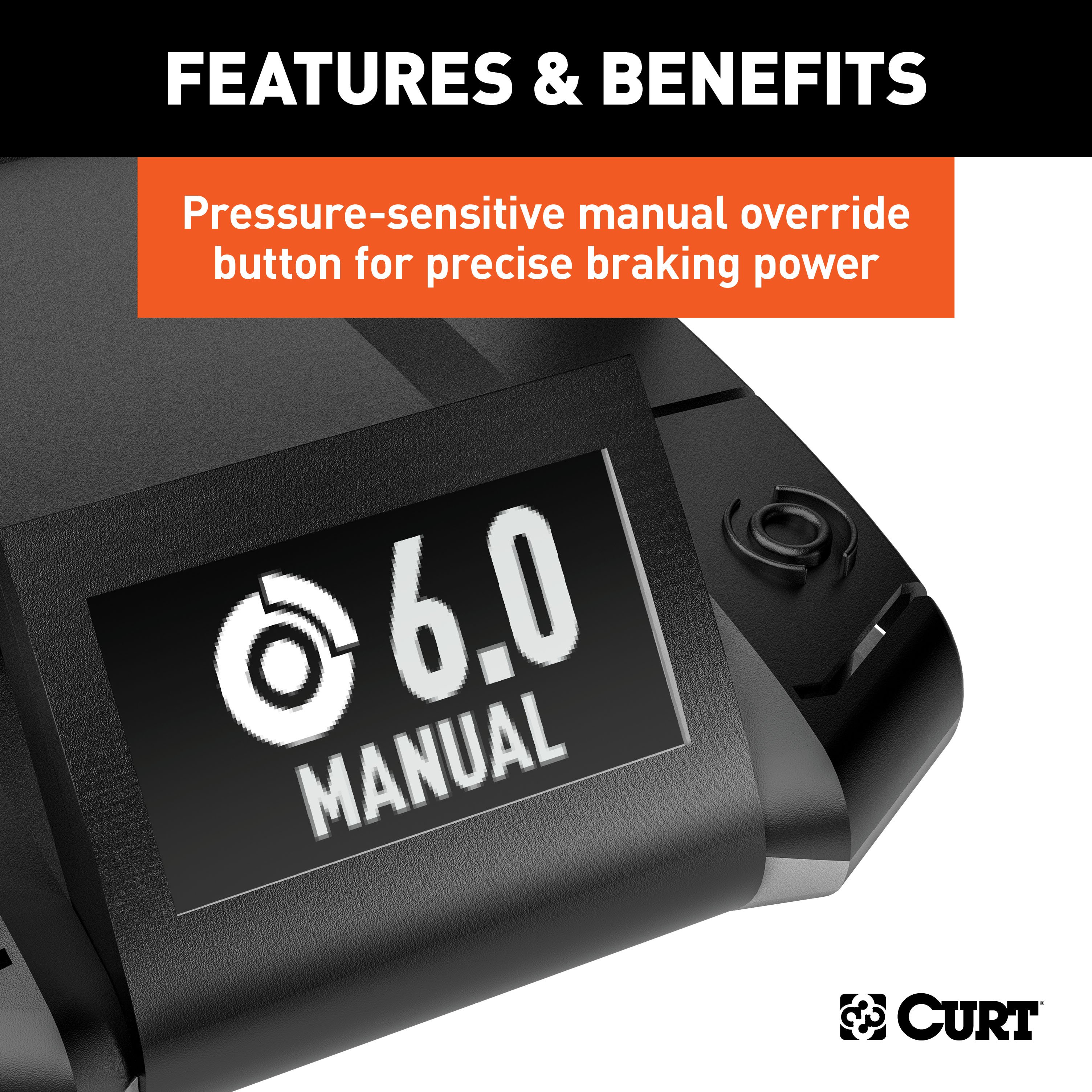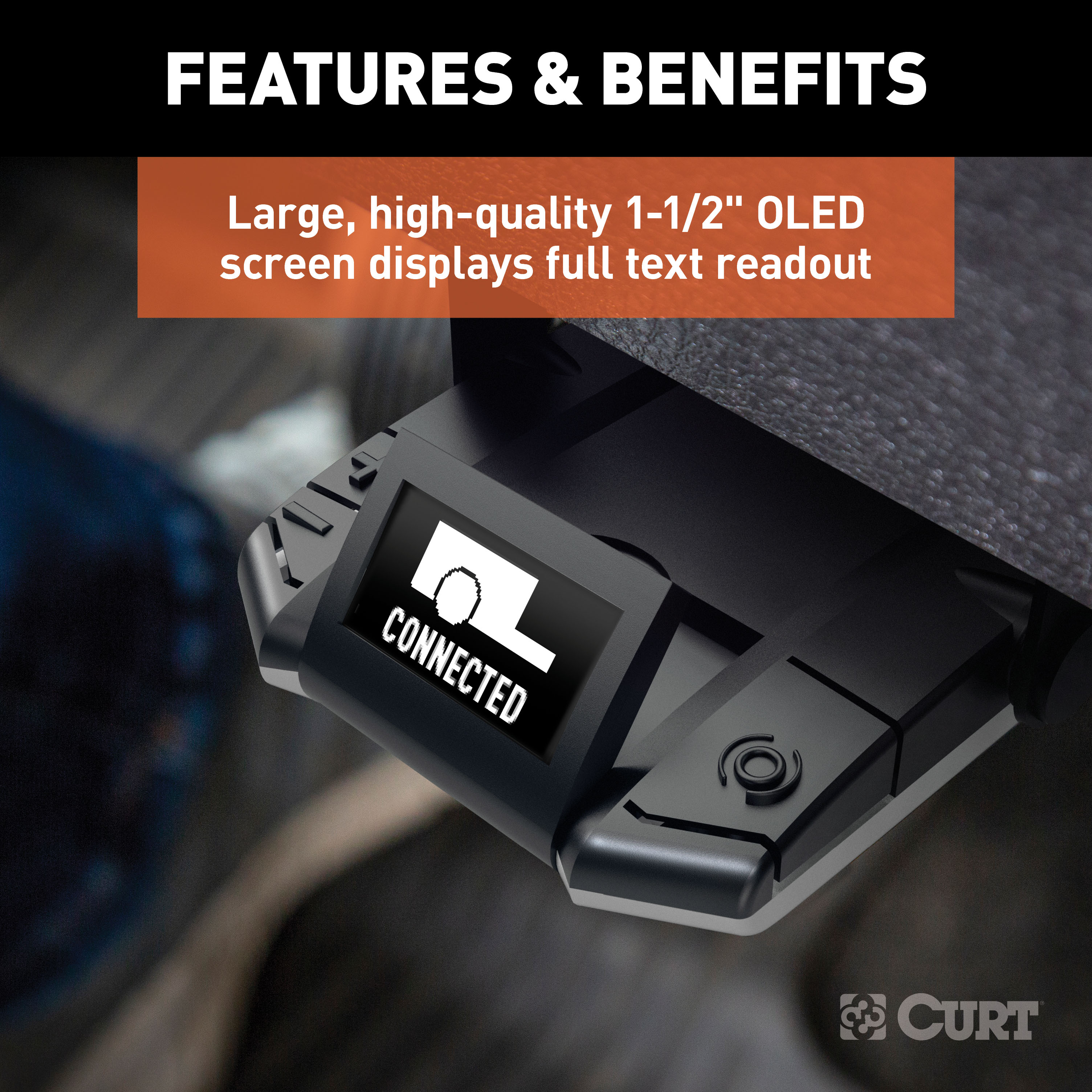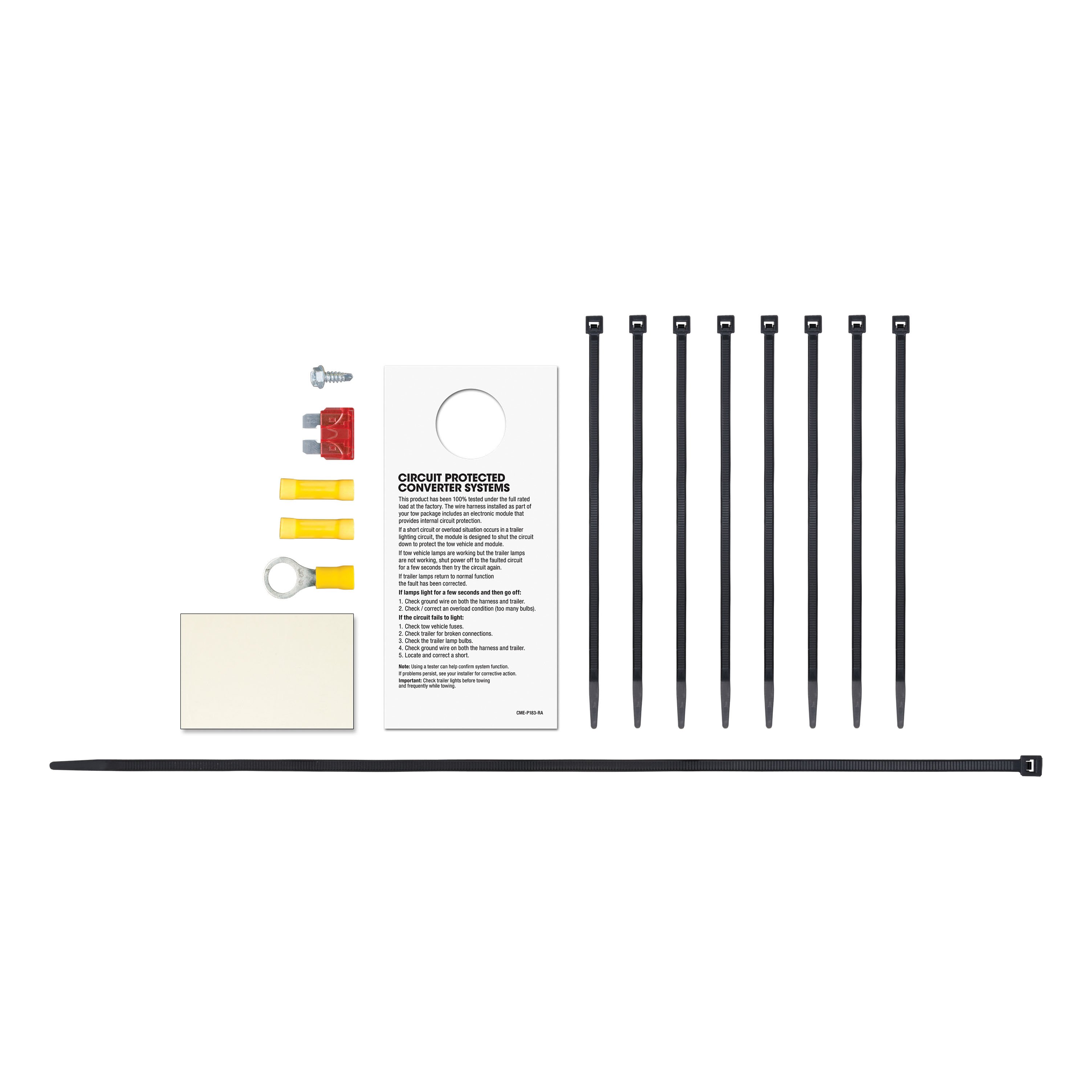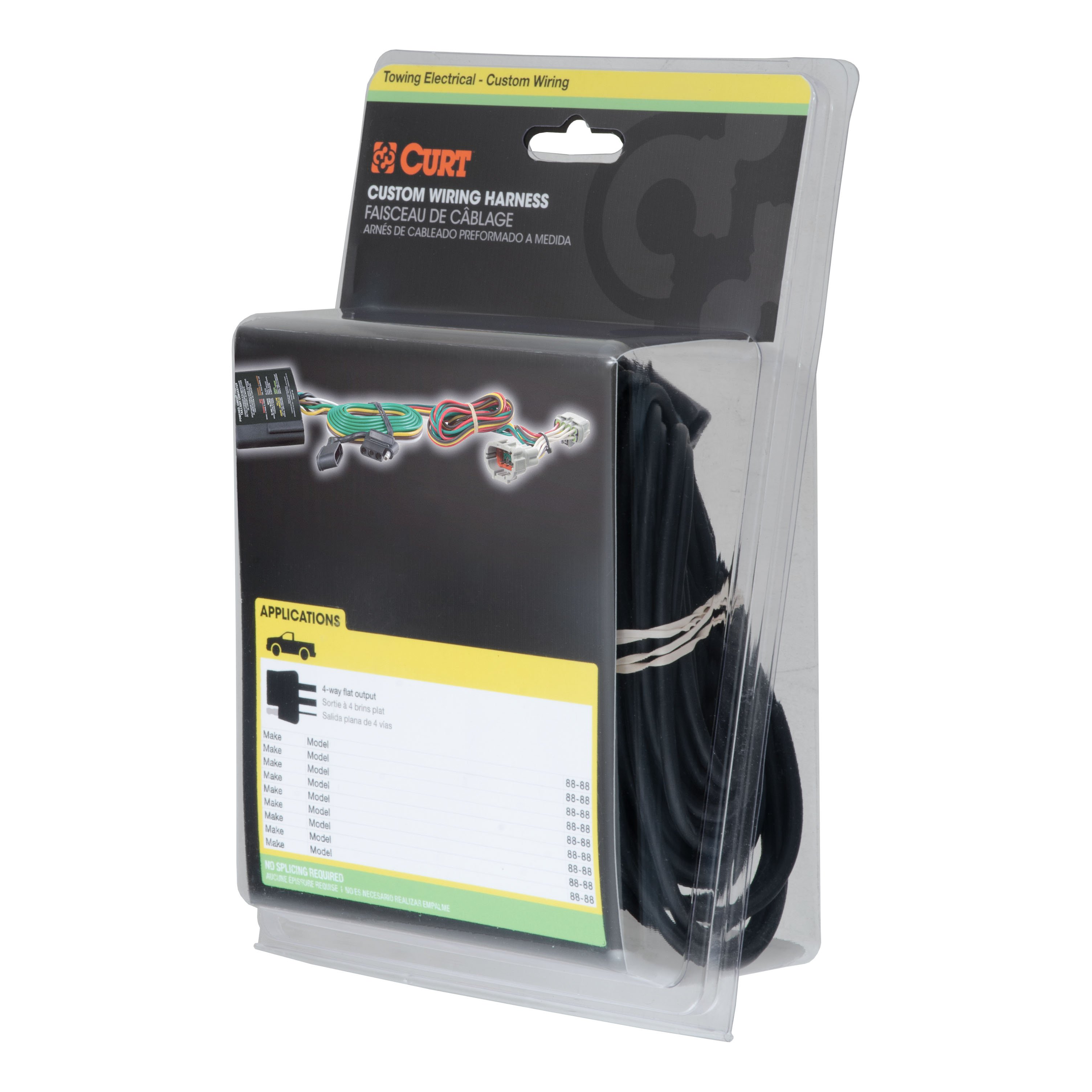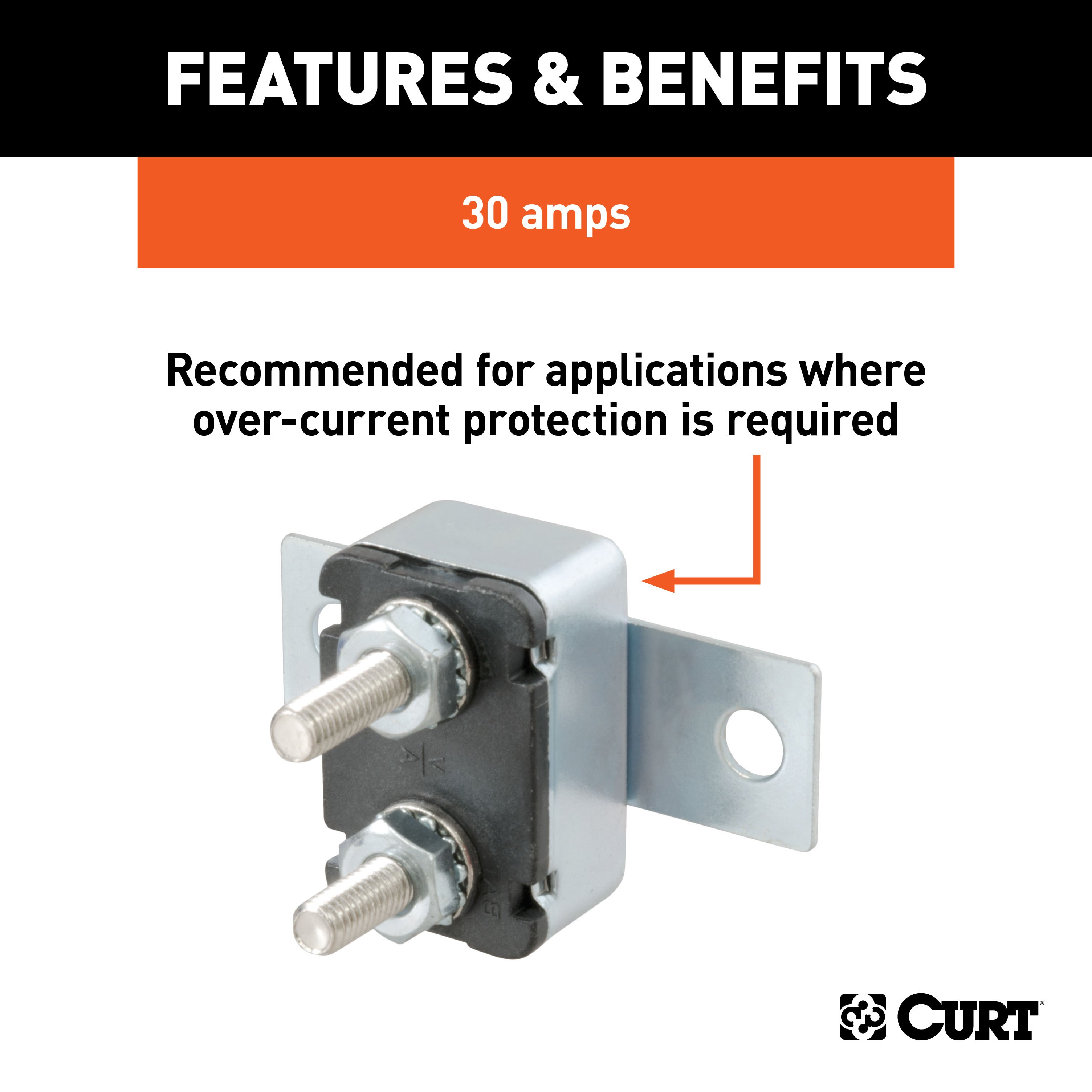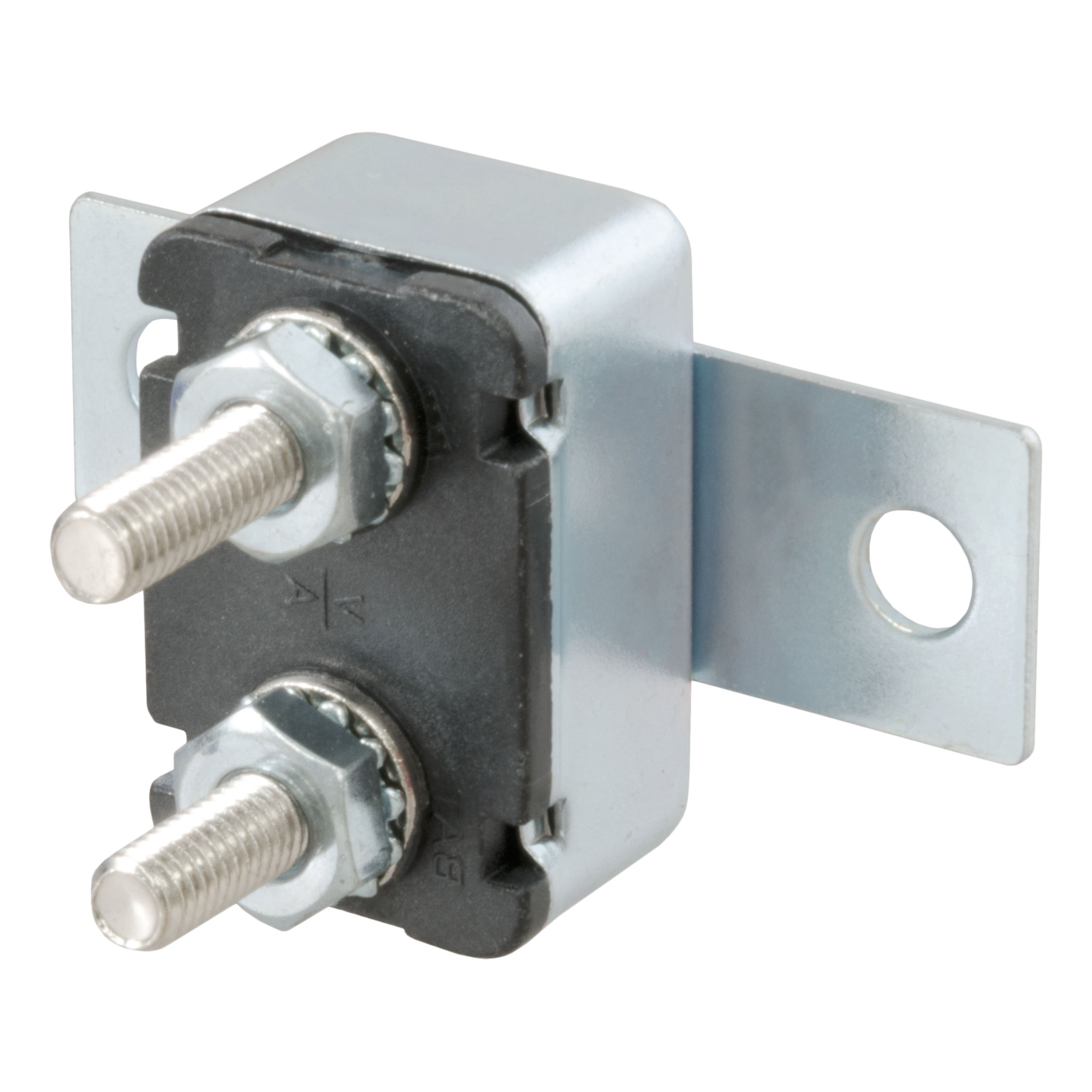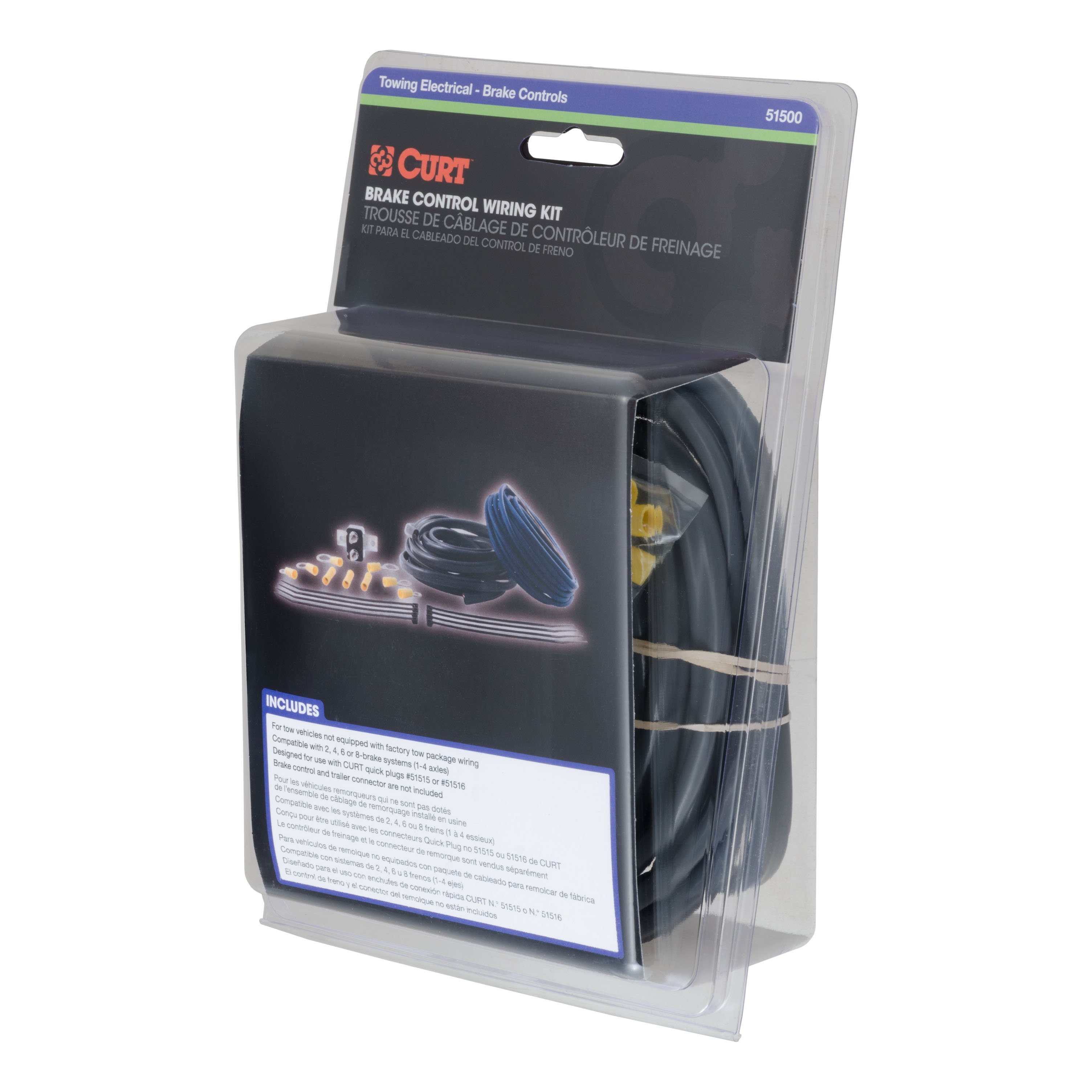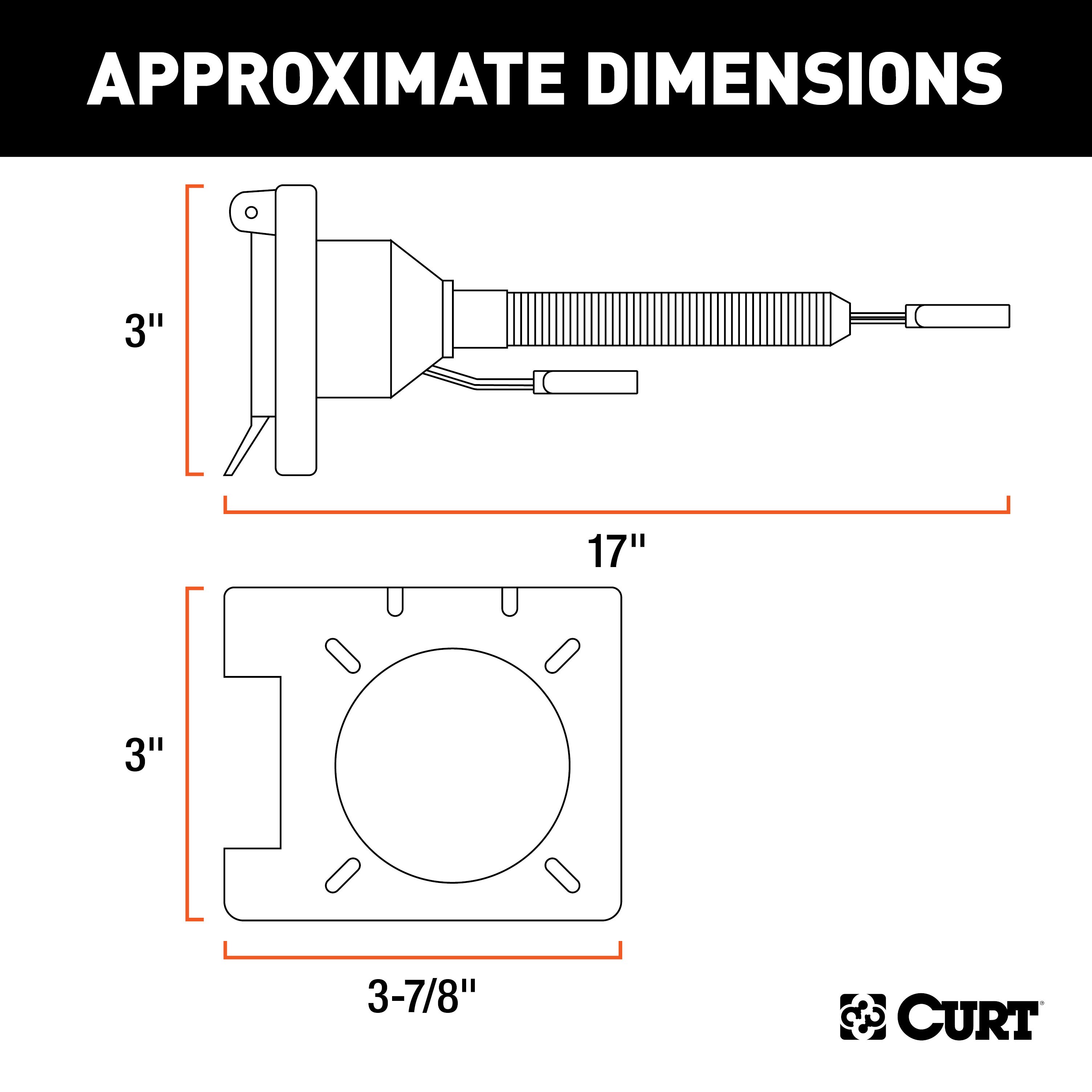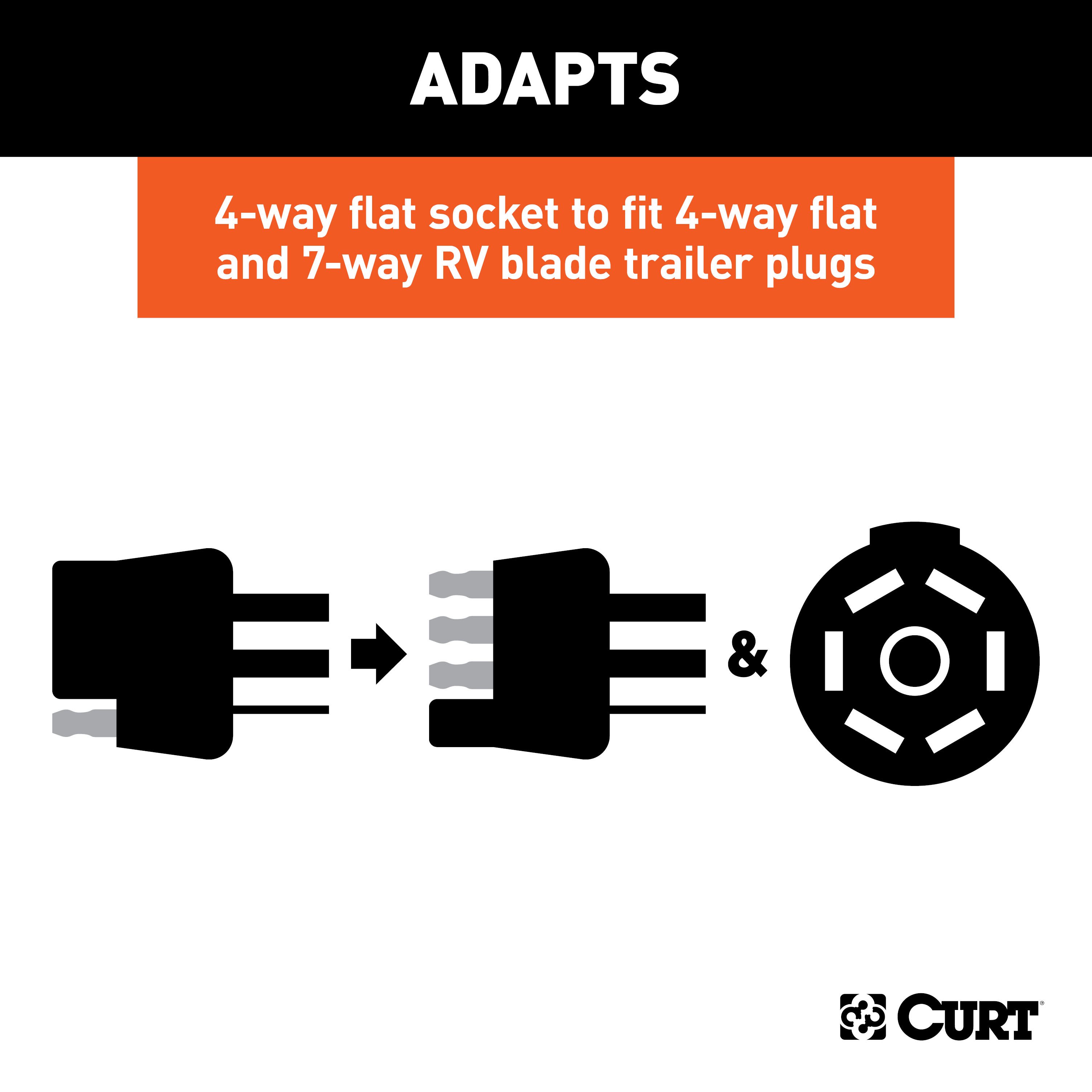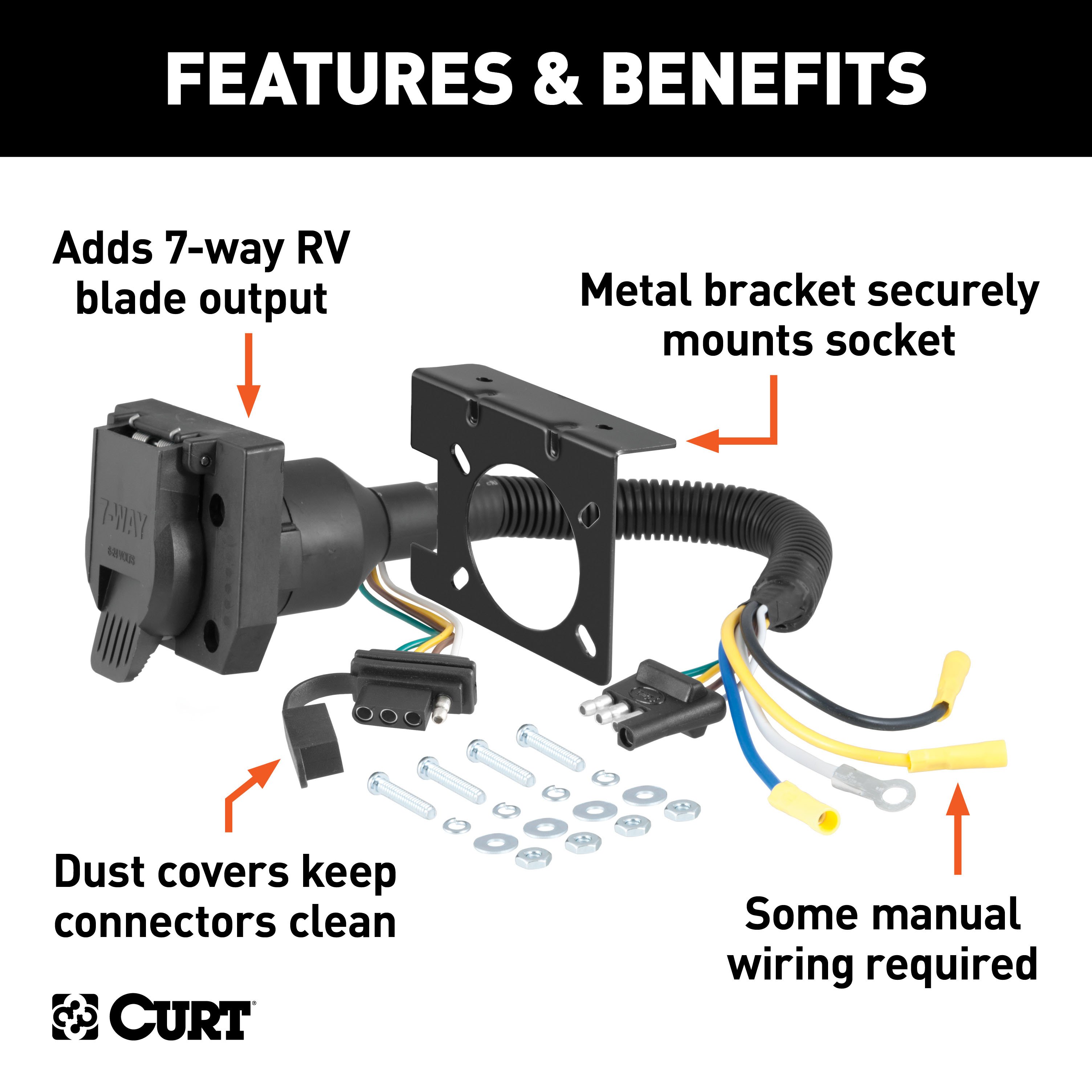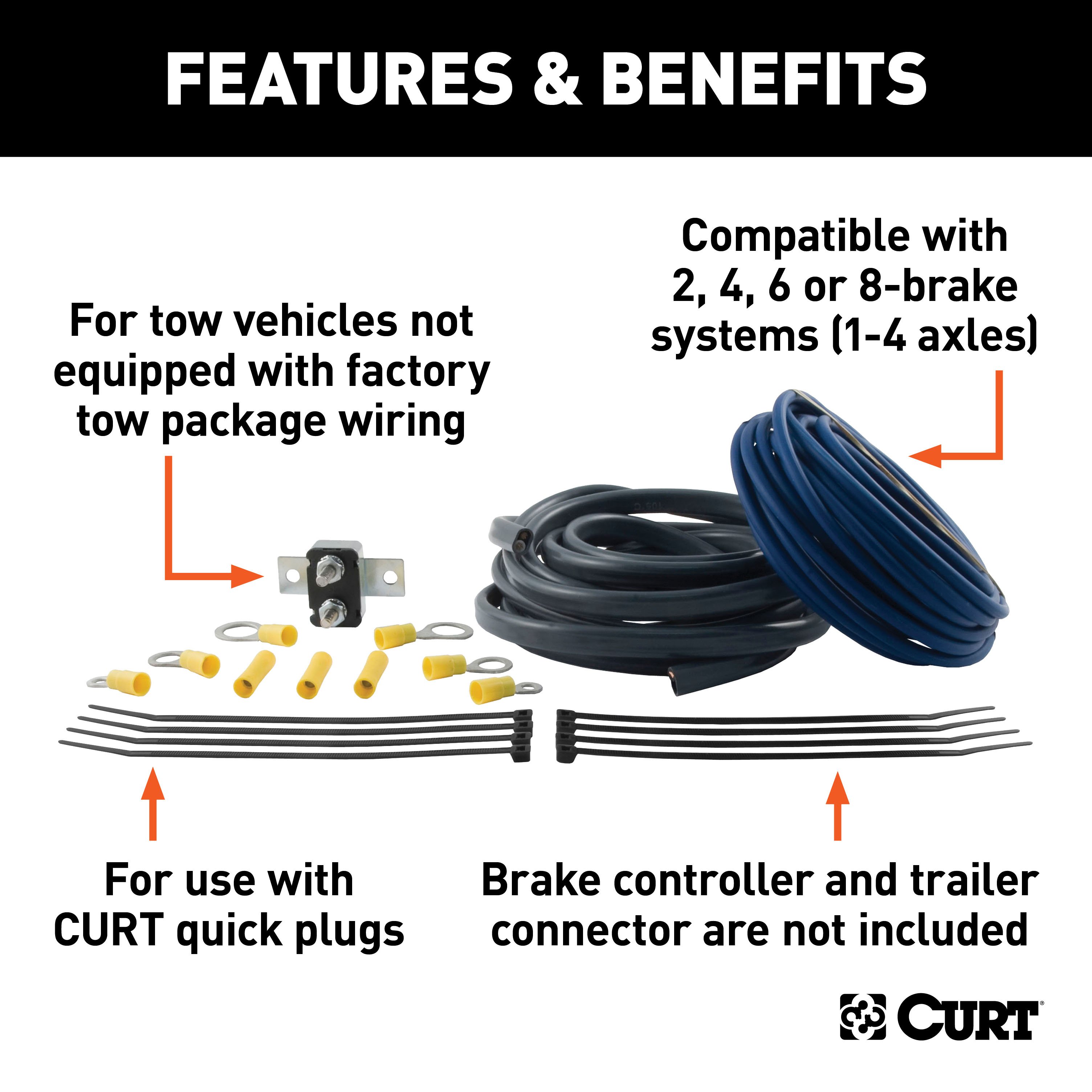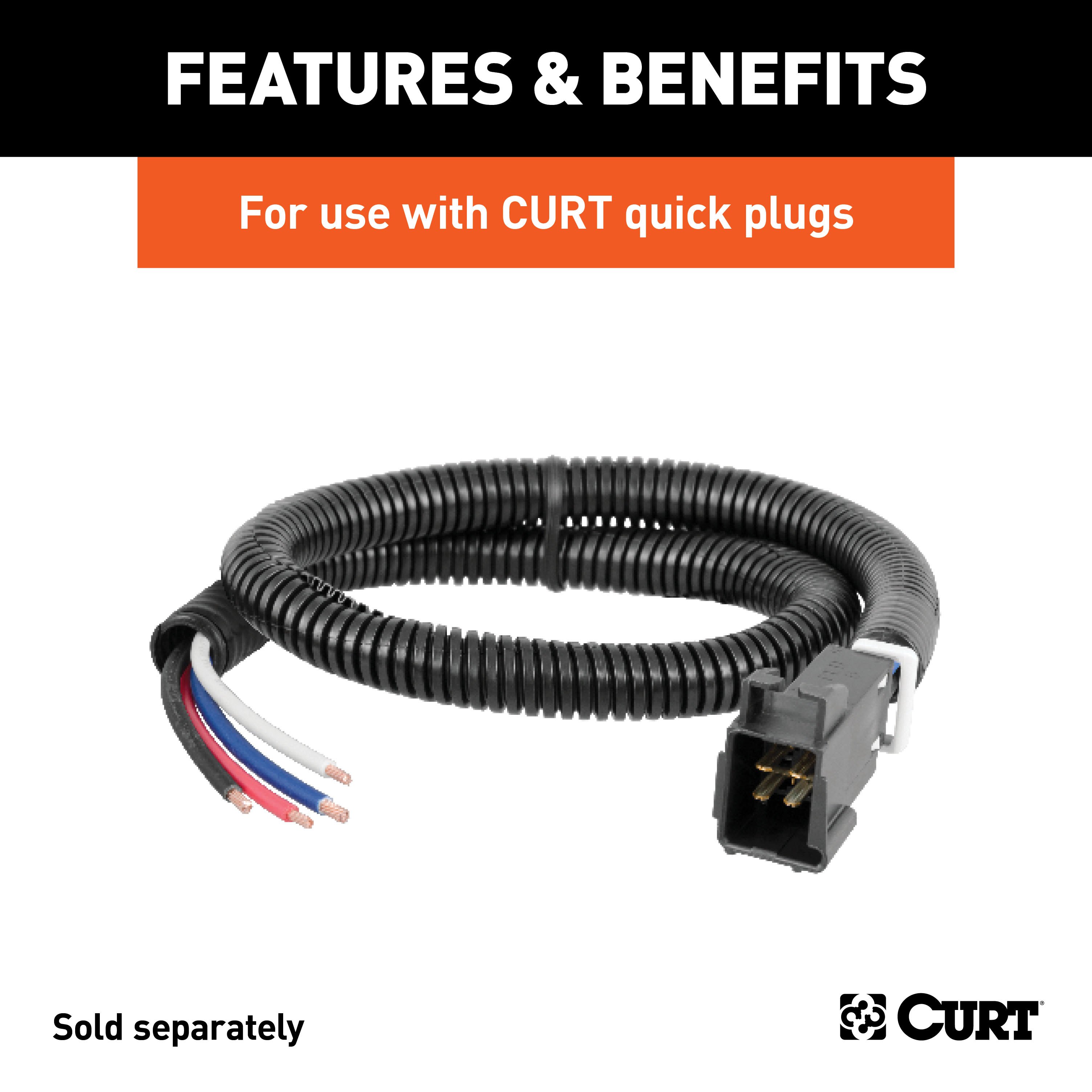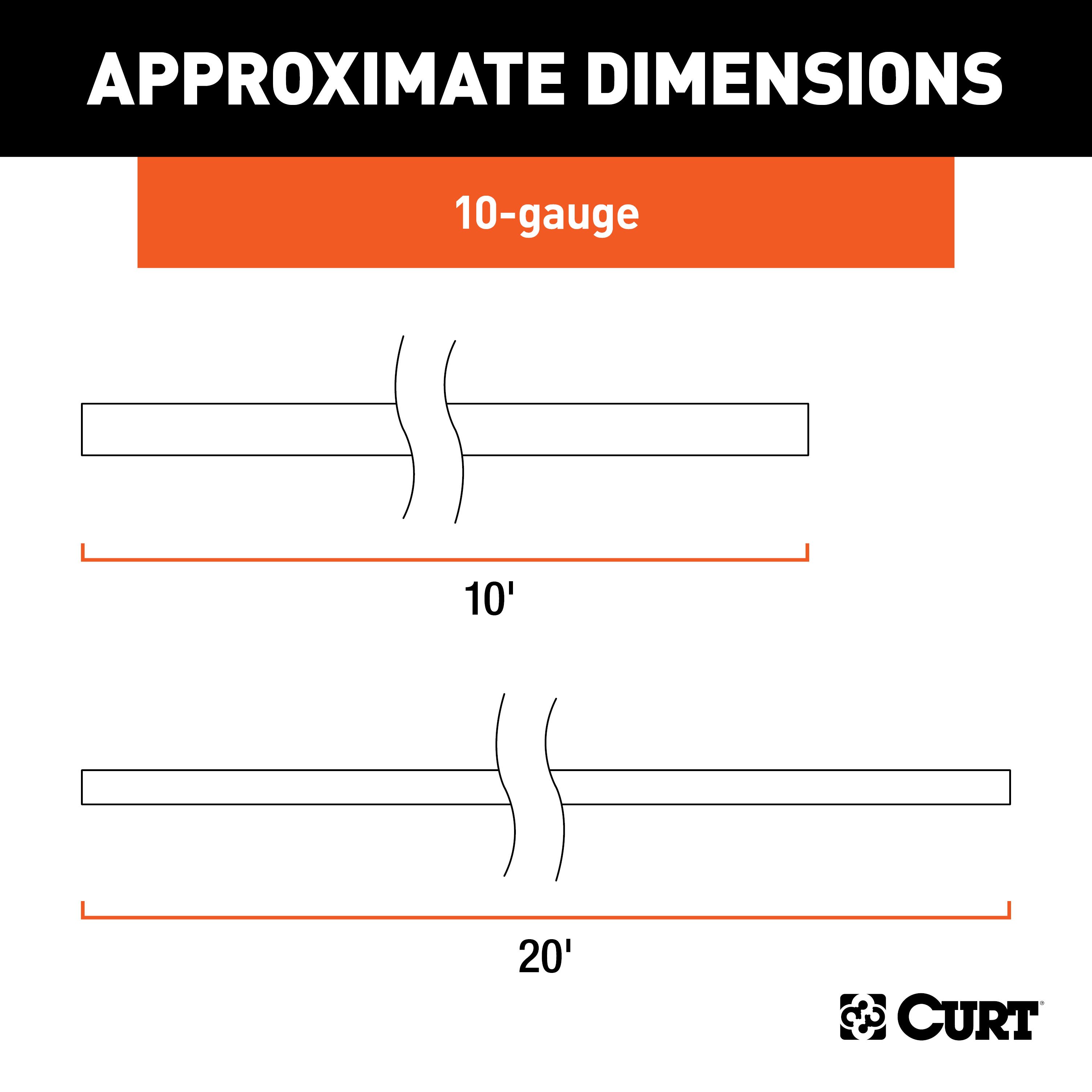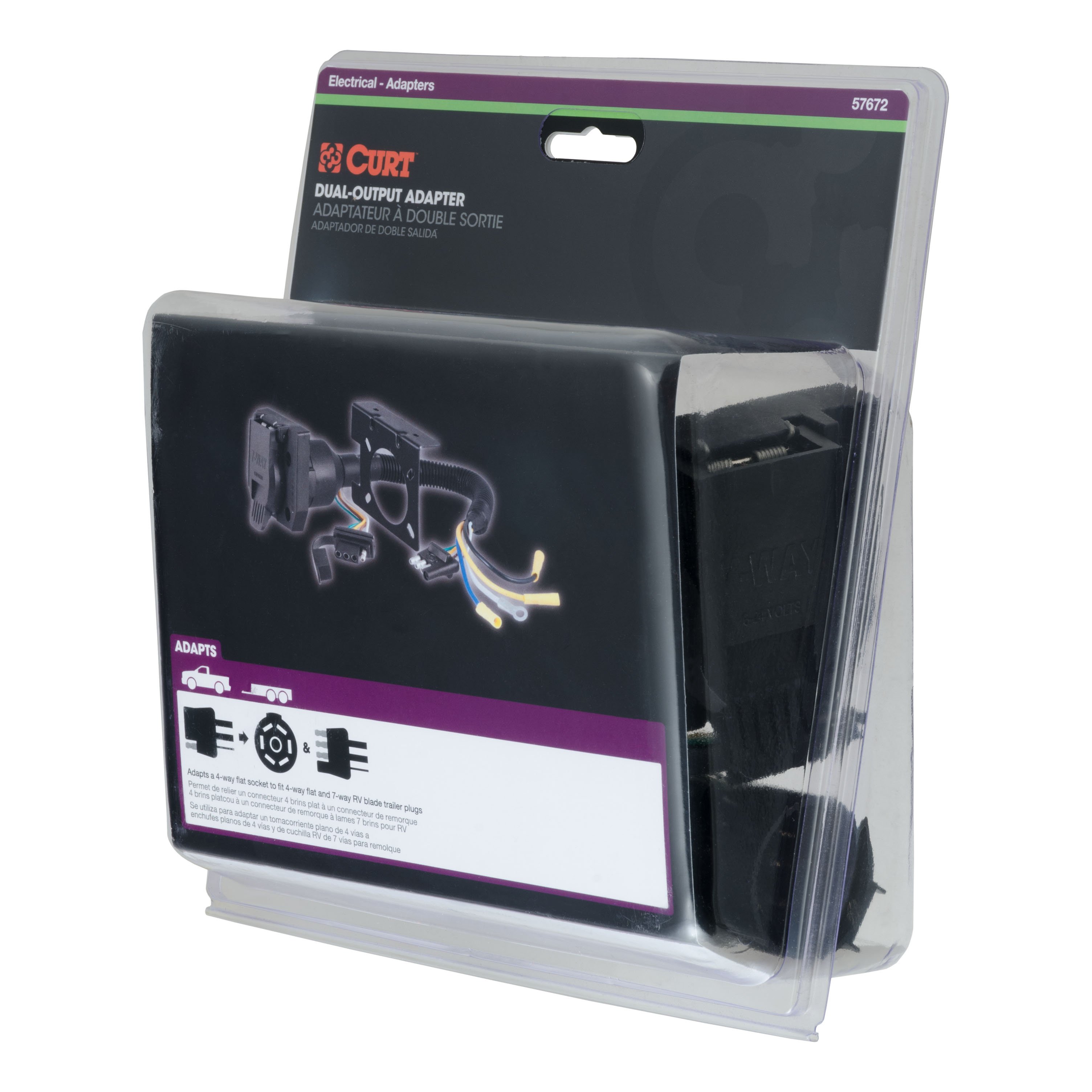Product Details
- Brand: Curt
- Model: 13564 51527 56407 57672 51500 58361 45042 51160-CH2541
- Includes: Class 3 Trailer Tow Hitch, Custom Wiring Harness, Trailer Brake Controller Harness, Dual-Output Electrical Adapter, Trailer Brake Controller Wiring Kit, 30-Amp Universal Circuit Breaker, Loaded Ball Mount with 2-5/16" Ball 2" Shank, Assure Proportional Trailer Brake Controller with Dynamic Screen
Compatibility Chart
Description
Get Expert Help
For 2020-2024 Jeep Wrangler JL Tow Package Camp n' Field Trailer Hitch + Brake Controller Curt Assure 51160 Proportional Up To 4 Axles + 7 Way Trailer Wiring Plug & 2-5/16" ball 4 inch drop Fits Diesel Only Curt 13564 2 inch Tow Receiver Install Notes
Installation Instructions for Jeep Wrangler JL EcoDiesel
Part Numbers:
- 13564
Tools Required:
- Ratchet
- Torque wrench
- Sockets: 16mm, 14mm, 3/4"
- Die grinder
- Safety glasses
Important Notices:
- DEF Tank and Exhaust Lowering Required: The DEF tank and exhaust must be temporarily lowered for proper installation.
- Hole Enlargement: Some models may require enlarging existing holes in the frame for fastener fitment.
- Periodic Inspections Recommended: Regularly inspect the hitch and hardware to ensure all components remain tight and secure.
Step-by-Step Instructions:
Step 1: Remove Rear DEF Tank Bolts
- Using a 16mm socket, remove the two M10 x 1.5 bolts securing the rear of the DEF tank mount.
Step 2: Loosen Front DEF Tank Nuts
- Loosen, but do not fully remove, the two M8 x 1.25 nuts securing the front of the DEF tank mount using a 14mm socket.
- Lower the DEF tank for easier access during installation.
Step 3: Position Hitch
- Position the hitch over the cross member and align the hitch holes with the cross member holes.
- Insert the provided 1/2"-13 x 4-1/2" hex bolts (#1) and 1/2" flat washers (#2) through the holes. Secure with 1/2"-13 serrated-flange nuts (#3) on the exterior side of the hitch.
Step 4: Torque Fasteners
- Torque the 1/2" fasteners (#1) to 110 lb-ft.
- Raise the DEF tank back into position and torque the two M10 x 1.5 bolts to 51 lb-ft and the two M8 x 1.25 nuts to 25.5 lb-ft.
Hardware List:
- (4) Hex bolt, 1/2"-13 x 4-1/2", grade 8
- (4) Flat washer, 1/2"
- (4) Serrated-flange nut, 1/2"-13, grade 8
Safety Notes:
- Safety glasses should be worn at all times during installation.
- Never exceed the vehicle manufacturer's recommended towing capacity.
- Always adhere to specified torque values to avoid damage to the vehicle or hitch.
Specifications:
- Gross trailer weight (GTW): 5,000 lbs.
- Tongue weight (TW): 500 lbs.
- Weight distribution (WD): 4,000 lbs.
- WD tongue weight (WDTW): 400 lbs.
Installation Instructions
Part Numbers:
- 13564
Tools Required:
- Ratchet
- Torque wrench
- Sockets: 16mm, 14mm, 3/4"
- Die grinder
- Safety glasses
Important Notices:
- DEF Tank and Exhaust Lowering Required: The DEF tank and exhaust must be temporarily lowered for proper installation.
- Hole Enlargement: Some models may require enlarging existing holes in the frame for fastener fitment.
- Periodic Inspections Recommended: Regularly inspect the hitch and hardware to ensure all components remain tight and secure.
Step-by-Step Instructions:
Step 1: Remove Rear DEF Tank Bolts
- Using a 16mm socket, remove the two M10 x 1.5 bolts securing the rear of the DEF tank mount.
Step 2: Loosen Front DEF Tank Nuts
- Loosen, but do not fully remove, the two M8 x 1.25 nuts securing the front of the DEF tank mount using a 14mm socket.
- Lower the DEF tank for easier access during installation.
Step 3: Position Hitch
- Position the hitch over the cross member and align the hitch holes with the cross member holes.
- Insert the provided 1/2"-13 x 4-1/2" hex bolts (#1) and 1/2" flat washers (#2) through the holes. Secure with 1/2"-13 serrated-flange nuts (#3) on the exterior side of the hitch.
Step 4: Torque Fasteners
- Torque the 1/2" fasteners (#1) to 110 lb-ft.
- Raise the DEF tank back into position and torque the two M10 x 1.5 bolts to 51 lb-ft and the two M8 x 1.25 nuts to 25.5 lb-ft.
Hardware List:
- (4) Hex bolt, 1/2"-13 x 4-1/2", grade 8
- (4) Flat washer, 1/2"
- (4) Serrated-flange nut, 1/2"-13, grade 8
Safety Notes:
- Safety glasses should be worn at all times during installation.
- Never exceed the vehicle manufacturer's recommended towing capacity.
- Always adhere to specified torque values to avoid damage to the vehicle or hitch.
Specifications:
- Gross trailer weight (GTW): 5,000 lbs.
- Tongue weight (TW): 500 lbs.
- Weight distribution (WD): 4,000 lbs.
- WD tongue weight (WDTW): 400 lbs.
Attention: This is a summary of the installation procedure. For complete installation instructions, including diagrams and detailed information from the manufacturer, please download the full installation PDF.
For Technical Support: For technical support and assistance, our team of experts is available to help. You can reach our tech support by visiting www.trailerjacks.com or calling 877-869-6690.
Warranty:
This product comes with a limited warranty of [X] years. Coverage includes defects in materials and workmanship under normal use. For complete warranty instructions, please download the full installation PDF.
Installation Instructions for Jeep Wrangler and Gladiator
Part Numbers:
- 56407
Wiring Access Locations:
- SUVs and Vans:
- S1: Behind driver-side taillight housing
- S2: Behind passenger-side taillight housing
- Trucks:
- T1: Behind driver-side taillight housing
- T2: Behind passenger-side taillight housing
Tools Required:
- Ratchet
- Ratchet extension
- Torx bit (T-30)
- Wire stripper
- Wire crimper
- Flat blade screwdriver
- Cutting tool
- Fish wire
Step-by-Step Instructions:
Jeep Wrangler
Step 1: Disconnect the Battery
- Locate the vehicle battery and disconnect the negative terminal.
- Secure the negative wire away from the battery.
Step 2: Access the Trim Panel
- Open the tailgate.
- Use a flat blade screwdriver to remove the trim access cover on the rear corner of the vehicle.
Step 3: Remove the Taillight
- Remove the fastener securing the taillight using a T-30 Torx bit.
- Carefully pull the taillight straight back and disconnect the wiring harness.
- Repeat this step on the passenger side.
Step 4: Install the Custom Wiring Harness
- On the driver side, connect the yellow wire of the custom wiring harness to the factory wiring harness.
- Ensure all connectors are fully seated and the locking tabs are secure.
Step 5: Mount the Converter Box
- Select a clean, flat surface away from debris and spray.
- Use the provided double-sided tape to adhere the black converter box.
- Secure the white ground wire to the vehicle frame using the provided screw.
Step 6: Route Green Wire and 4-Flat Connector
- Route the green wire and 4-flat connector down and along the vehicle frame to the passenger side.
- Secure all wires using the provided cable ties.
Step 7: Connect Passenger-Side Wiring
- Insert the green wire of the custom wiring harness into the passenger-side factory wiring harness.
- Verify that the connectors are secure with locking tabs in place.
Step 8: Route and Secure Power Wire
- Route the black power wire from the battery to the wiring harness, avoiding pinch points, heat, and rotating components.
- Attach the ring terminal to the positive terminal of the battery.
Step 9: Test the System
- Reconnect the negative battery terminal.
- Test the wiring with a test light or trailer to confirm functionality.
Step 10: Reinstall Components
- Reinstall the taillights and trim panels removed earlier.
- Secure any loose wires using cable ties.
- Attach the provided 4-flat dust cover to prevent corrosion.
Jeep Gladiator
Step 1: Disconnect the Battery
- Locate the vehicle battery and disconnect the negative terminal.
- Secure the negative wire away from the battery.
Step 2: Remove Taillight Bolts
- Open the tailgate.
- Use an 8mm socket to remove the bolts securing the taillights.
Step 3: Remove the Taillight
- Carefully pull the taillight straight back and disconnect the wiring harness.
- Repeat this step on the passenger side.
Step 4: Install the Custom Wiring Harness
- On the driver side, connect the yellow wire of the custom wiring harness to the factory wiring harness.
- Ensure all connectors are fully seated and the locking tabs are secure.
Step 5: Mount the Converter Box
- Select a clean, flat surface away from debris and spray.
- Use the provided double-sided tape to adhere the black converter box.
- Secure the white ground wire to the vehicle frame using the provided screw.
Step 6: Route Green Wire and 4-Flat Connector
- Route the green wire and 4-flat connector down and along the vehicle frame to the passenger side.
- Secure all wires using the provided cable ties.
Step 7: Connect Passenger-Side Wiring
- Insert the green wire of the custom wiring harness into the passenger-side factory wiring harness.
- Verify that the connectors are secure with locking tabs in place.
Step 8: Route and Secure Power Wire
- Route the black power wire from the battery to the wiring harness, avoiding pinch points, heat, and rotating components.
- Attach the ring terminal to the positive terminal of the battery.
Step 9: Test the System
- Reconnect the negative battery terminal.
- Test the wiring with a test light or trailer to confirm functionality.
Step 10: Reinstall Components
- Reinstall the taillights and trim panels removed earlier.
- Secure any loose wires using cable ties.
- Attach the provided 4-flat dust cover to prevent corrosion.
Safety Notes:
- Do not exceed the product rating or the tow vehicle lamp load rating.
- Ensure the battery connection is fuse-protected (10-amp max).
- Avoid drilling into hidden areas to prevent damage or injury.
Specifications:
- Signal circuits: 3.0 amps per side
- Tail/running circuits: 6.0 amps total
- Compatible with 12-volt negative ground systems
Installation Instructions for Vehicle Models
Part Numbers:
- 56407
Wiring Access Locations:
- SUVs and Vans:
- S1: Behind driver-side taillight housing
- S2: Behind passenger-side taillight housing
- Trucks:
- T1: Behind driver-side taillight housing
- T2: Behind passenger-side taillight housing
Tools Required:
- Ratchet
- Ratchet extension
- Torx bit (T-30)
- Wire stripper
- Wire crimper
- Flat blade screwdriver
- Cutting tool
- Fish wire
Step-by-Step Instructions:
Jeep Wrangler
Step 1: Disconnect the Battery
- Locate the vehicle battery and disconnect the negative terminal.
- Secure the negative wire away from the battery.
Step 2: Access the Trim Panel
- Open the tailgate.
- Use a flat blade screwdriver to remove the trim access cover on the rear corner of the vehicle.
Step 3: Remove the Taillight
- Remove the fastener securing the taillight using a T-30 Torx bit.
- Carefully pull the taillight straight back and disconnect the wiring harness.
- Repeat this step on the passenger side.
Step 4: Install the Custom Wiring Harness
- On the driver side, connect the yellow wire of the custom wiring harness to the factory wiring harness.
- Ensure all connectors are fully seated and the locking tabs are secure.
Step 5: Mount the Converter Box
- Select a clean, flat surface away from debris and spray.
- Use the provided double-sided tape to adhere the black converter box.
- Secure the white ground wire to the vehicle frame using the provided screw.
Step 6: Route Green Wire and 4-Flat Connector
- Route the green wire and 4-flat connector down and along the vehicle frame to the passenger side.
- Secure all wires using the provided cable ties.
Step 7: Connect Passenger-Side Wiring
- Insert the green wire of the custom wiring harness into the passenger-side factory wiring harness.
- Verify that the connectors are secure with locking tabs in place.
Step 8: Route and Secure Power Wire
- Route the black power wire from the battery to the wiring harness, avoiding pinch points, heat, and rotating components.
- Attach the ring terminal to the positive terminal of the battery.
Step 9: Test the System
- Reconnect the negative battery terminal.
- Test the wiring with a test light or trailer to confirm functionality.
Step 10: Reinstall Components
- Reinstall the taillights and trim panels removed earlier.
- Secure any loose wires using cable ties.
- Attach the provided 4-flat dust cover to prevent corrosion.
Jeep Gladiator
Step 1: Disconnect the Battery
- Locate the vehicle battery and disconnect the negative terminal.
- Secure the negative wire away from the battery.
Step 2: Remove Taillight Bolts
- Open the tailgate.
- Use an 8mm socket to remove the bolts securing the taillights.
Step 3: Remove the Taillight
- Carefully pull the taillight straight back and disconnect the wiring harness.
- Repeat this step on the passenger side.
Step 4: Install the Custom Wiring Harness
- On the driver side, connect the yellow wire of the custom wiring harness to the factory wiring harness.
- Ensure all connectors are fully seated and the locking tabs are secure.
Step 5: Mount the Converter Box
- Select a clean, flat surface away from debris and spray.
- Use the provided double-sided tape to adhere the black converter box.
- Secure the white ground wire to the vehicle frame using the provided screw.
Step 6: Route Green Wire and 4-Flat Connector
- Route the green wire and 4-flat connector down and along the vehicle frame to the passenger side.
- Secure all wires using the provided cable ties.
Step 7: Connect Passenger-Side Wiring
- Insert the green wire of the custom wiring harness into the passenger-side factory wiring harness.
- Verify that the connectors are secure with locking tabs in place.
Step 8: Route and Secure Power Wire
- Route the black power wire from the battery to the wiring harness, avoiding pinch points, heat, and rotating components.
- Attach the ring terminal to the positive terminal of the battery.
Step 9: Test the System
- Reconnect the negative battery terminal.
- Test the wiring with a test light or trailer to confirm functionality.
Step 10: Reinstall Components
- Reinstall the taillights and trim panels removed earlier.
- Secure any loose wires using cable ties.
- Attach the provided 4-flat dust cover to prevent corrosion.
Safety Notes:
- Do not exceed the product rating or the tow vehicle lamp load rating.
- Ensure the battery connection is fuse-protected (10-amp max).
- Avoid drilling into hidden areas to prevent damage or injury.
Specifications:
- Signal circuits: 3.0 amps per side
- Tail/running circuits: 6.0 amps total
- Compatible with 12-volt negative ground systems
Additional Information:
- Attention: This is a summary of the installation procedure. For complete installation instructions, including diagrams and detailed information from the manufacturer, please download the full installation PDF.
Technical Support:
- For technical support and assistance, our team of experts is available to help. You can reach our tech support by visiting www.trailerjacks.com or calling 877-869-6690.
Warranty Information:
- For complete warranty instructions, please download the full installation PDF.
Installation Instructions for 4-Way to 7-Way Adapter and Brake Control Wiring
Tools Required:
- Phillips Head Screwdriver
- Drill with 3/32" Drill Bit
- 10mm Socket & Ratchet or Wrench
- Wire Crimpers
- Wire Cutters
- Test Light or Multimeter
- Cable Ties
Part 1: Install the 4-Way to 7-Way Adapter
Step-by-Step Instructions:
-
Mount the Adapter:
- Choose a suitable mounting point on the vehicle, typically near the hitch.
- Use the provided bracket and screws to secure the adapter.
-
Connect the 4-Flat Plug:
- Plug the 4-flat connector on the adapter into the existing 4-flat plug on the vehicle.
- This connection enables tail lights, left turn, and right turn signals.
-
Ground the Adapter:
- Locate a clean, solid grounding point near the adapter.
- Drill a 3/32" hole if necessary and secure the white ground wire from the adapter using the provided screw and eyelet.
-
Leave Additional Wires Disconnected:
- The following wires will remain disconnected until Part 2:
- Black Wire: Power from the battery.
- Blue Wire: Brake control output.
- Yellow Wire: Reverse light (optional; leave disconnected unless needed).
- The following wires will remain disconnected until Part 2:
-
Test Initial Connection:
- Use a test light or trailer to verify functionality of the 4-way connections (tail lights, turn signals).
Part 2: Install Brake Control Wiring
Step-by-Step Instructions:
-
Mount Circuit Breakers:
- Install two 30A circuit breakers on the firewall or another suitable location near the battery.
- Use self-tapping screws to mount them securely.
-
Route Power Wires:
- Connect the black 12-gauge wire from the 7-way adapter to the auxiliary side of one circuit breaker (this powers the 7-way socket).
- Run a heavy-gauge wire from the battery's positive terminal to the battery side of this circuit breaker, using a ring terminal.
- Run another heavy-gauge wire from the battery's positive terminal to the auxiliary side of the second circuit breaker (for the brake controller).
-
Install the Brake Controller:
- Mount the brake controller under the dash on a firm surface.
- Use the following connections:
- Red Wire: Connect to the cold side of the brake switch (active only when the brake pedal is pressed).
- Blue Wire: Connect to the blue wire on the 7-way adapter for trailer brakes.
- White Wire: Connect to a solid ground point on the vehicle body.
- Black Wire: Connect to the auxiliary side of the second 30A circuit breaker (provides power to the brake controller).
-
Optional: Connect Reverse Light Circuit:
- If the trailer has a reverse light circuit, connect the yellow wire from the 7-way adapter to the vehicle’s reverse light circuit.
-
Reconnect the Battery:
- Reattach the negative battery cable and ensure all connections are secure.
- Insert the fuses into both circuit breakers.
-
Secure All Wires:
- Use cable ties to secure all loose wires and prevent damage or rattling.
-
Test the System:
- Verify functionality of all circuits (running lights, turn signals, brake lights, and brake controller output).
- If applicable, test the reverse light circuit.
Notes:
- Most installations will only require connecting the black and blue wires from the 7-way adapter.
- Leave the yellow wire disconnected unless the trailer has a reverse light or surge brake lockout circuit.
- Always adhere to safety guidelines and verify all connections before use.
Warning: Incorrect wiring can cause damage to the vehicle or trailer. Test all connections carefully before use.
Installation Instructions for 4-Way to 7-Way Adapter and Brake Control Wiring
Tools Required:
- Phillips Head Screwdriver
- Drill with 3/32" Drill Bit
- 10mm Socket & Ratchet or Wrench
- Wire Crimpers
- Wire Cutters
- Test Light or Multimeter
- Cable Ties
Part 1: Install the 4-Way to 7-Way Adapter
Step-by-Step Instructions:
-
Mount the Adapter:
- Choose a suitable mounting point on the vehicle, typically near the hitch.
- Use the provided bracket and screws to secure the adapter.
-
Connect the 4-Flat Plug:
- Plug the 4-flat connector on the adapter into the existing 4-flat plug on the vehicle.
- This connection enables tail lights, left turn, and right turn signals.
-
Ground the Adapter:
- Locate a clean, solid grounding point near the adapter.
- Drill a 3/32" hole if necessary and secure the white ground wire from the adapter using the provided screw and eyelet.
-
Leave Additional Wires Disconnected:
- The following wires will remain disconnected until Part 2:
- Black Wire: Power from the battery.
- Blue Wire: Brake control output.
- Yellow Wire: Reverse light (optional; leave disconnected unless needed).
- The following wires will remain disconnected until Part 2:
-
Test Initial Connection:
- Use a test light or trailer to verify functionality of the 4-way connections (tail lights, turn signals).
Part 2: Install Brake Control Wiring
Step-by-Step Instructions:
-
Mount Circuit Breakers:
- Install two 30A circuit breakers on the firewall or another suitable location near the battery.
- Use self-tapping screws to mount them securely.
-
Route Power Wires:
- Connect the black 12-gauge wire from the 7-way adapter to the auxiliary side of one circuit breaker (this powers the 7-way socket).
- Run a heavy-gauge wire from the battery's positive terminal to the battery side of this circuit breaker, using a ring terminal.
- Run another heavy-gauge wire from the battery's positive terminal to the auxiliary side of the second circuit breaker (for the brake controller).
-
Install the Brake Controller:
- Mount the brake controller under the dash on a firm surface.
- Use the following connections:
- Red Wire: Connect to the cold side of the brake switch (active only when the brake pedal is pressed).
- Blue Wire: Connect to the blue wire on the 7-way adapter for trailer brakes.
- White Wire: Connect to a solid ground point on the vehicle body.
- Black Wire: Connect to the auxiliary side of the second 30A circuit breaker (provides power to the brake controller).
-
Optional: Connect Reverse Light Circuit:
- If the trailer has a reverse light circuit, connect the yellow wire from the 7-way adapter to the vehicle’s reverse light circuit.
-
Reconnect the Battery:
- Reattach the negative battery cable and ensure all connections are secure.
- Insert the fuses into both circuit breakers.
-
Secure All Wires:
- Use cable ties to secure all loose wires and prevent damage or rattling.
-
Test the System:
- Verify functionality of all circuits (running lights, turn signals, brake lights, and brake controller output).
- If applicable, test the reverse light circuit.
Notes:
- Most installations will only require connecting the black and blue wires from the 7-way adapter.
- Leave the yellow wire disconnected unless the trailer has a reverse light or surge brake lockout circuit.
- Always adhere to safety guidelines and verify all connections before use.
Warning: Incorrect wiring can cause damage to the vehicle or trailer. Test all connections carefully before use.
Attention:
This is a summary of the installation procedure. For complete installation instructions, including diagrams and detailed information from the manufacturer, please download the full installation PDF.
Warranty Information:
For complete warranty instructions, please download the full installation PDF.
Technical Support:
For technical support and assistance, our team of experts is available to help. You can reach our tech support by visiting www.trailerjacks.com or calling 877-869-6690.
Installation Instructions for Jeep Wrangler JL and Jeep Gladiator
Part Numbers:
- 51527
Wiring Access Location:
- Under dash, left of the steering column, near the emergency brake pedal
Tools Required:
- None
Step-by-Step Instructions:
Step 1: Locate the vehicle brake control harness connector
- Find the 4-pin electric brake control harness connector under the dash, to the left of the steering column.
- It will be taped to another harness near the emergency brake pedal and will mate with the brake control adapter.
Step 2: Connect the brake control adapter
- Plug the brake control adapter into the vehicle’s electric controller connector.
- Use butt connectors to attach the adapter wires to the corresponding wires on the electric brake control, following the brake control manufacturer’s instructions.
Step 3: Complete installation and mount the brake control unit
- Complete the installation using the manufacturer’s instructions.
- Mount the brake control unit as directed.
- Perform the recommended test procedures to verify functionality.
Safety Notes:
- Vehicles not equipped with an OEM trailer tow package may require fuses and relays to complete output and battery feed circuits (sold separately).
- Consult the owner’s manual for specific fuse and relay locations.
- Do not exceed the towing manufacturer’s rating or the following limits:
- Maximum 4 axles: 8 brakes (24 amps).
- Always wear safety glasses and follow all safety precautions during installation.
- Overloading circuits can cause fires.
Installation Instructions for Vehicles with Electric Brake Control
Part Numbers:
- 51527
Wiring Access Location:
- Under dash, left of the steering column, near the emergency brake pedal
Tools Required:
- None
Step-by-Step Instructions:
Step 1: Locate the vehicle brake control harness connector
- Find the 4-pin electric brake control harness connector under the dash, to the left of the steering column.
- It will be taped to another harness near the emergency brake pedal and will mate with the brake control adapter.
Step 2: Connect the brake control adapter
- Plug the brake control adapter into the vehicle’s electric controller connector.
- Use butt connectors to attach the adapter wires to the corresponding wires on the electric brake control, following the brake control manufacturer’s instructions.
Step 3: Complete installation and mount the brake control unit
- Complete the installation using the manufacturer’s instructions.
- Mount the brake control unit as directed.
- Perform the recommended test procedures to verify functionality.
Safety Notes:
- Vehicles not equipped with an OEM trailer tow package may require fuses and relays to complete output and battery feed circuits (sold separately).
- Consult the owner’s manual for specific fuse and relay locations.
- Do not exceed the towing manufacturer’s rating or the following limits:
- Maximum 4 axles: 8 brakes (24 amps).
- Always wear safety glasses and follow all safety precautions during installation.
- Overloading circuits can cause fires.
For complete installation instructions, including diagrams and detailed information from the manufacturer, please download the full installation PDF.
For technical support and assistance, our team of experts is available to help. You can reach our tech support by visiting www.trailerjacks.com or calling 877-869-6690.
Installation Instructions for Brake Controller
Product Information:
- Application: For trailers with 2 to 8 brakes
- System: 12-volt negative ground systems
Package Contents:
- (1) Brake Controller Module with Quick Plug
- (1) Mounting Bracket
- (2) Keyed Spacers
- (4) Mounting Bracket Screws
- (1) Quick Reference Card
- (2) Keyed Washers
Tools Required:
- Drill with 1/8" drill bit
- Wire Crimpers
- Wire Cutters
- Phillips Head Screwdriver
Key Features:
- Display for output and sensitivity settings
- Manual trailer braking control
- Switchable manual control options (100% or output setting)
- Brake light activation switch
- Reverse voltage and overload protection
- Compatible with electric and hydraulic trailer brake systems
Warnings and Important Notes:
- The brake controller’s positive and ground wires must connect directly to the vehicle’s battery with 10-gauge stranded wire.
- Avoid mounting near a CB radio or other RF transmitters.
- Disconnect the trailer plug when testing a breakaway switch.
Step-by-Step Installation Instructions:
1. Select the Mounting Location:
- The mounting location should be:
- Within the driver’s reach
- On a solid surface
- Free of obstructions behind the mounting surface
2. Install the Mounting Bracket:
- Position the bracket and mark the mounting holes.
- Drill holes using a 1/8” drill bit.
- Secure the bracket with the provided self-tapping screws (do not overtighten).
3. Attach the Brake Controller:
- Place the keyed spacer and washer on each side of the mounting bracket.
- Slide the brake controller into the bracket and secure it with screws.
4. Wiring the Brake Controller:
- Black Wire (Power Input): Connect to the positive (+) battery terminal through a 30-amp auto-reset circuit breaker.
- White Wire (Ground): Connect directly to the negative (-) battery terminal.
- Red Wire (Stoplight Input): Connect to the stoplight wire that is “hot” only when the brake pedal is pressed.
- Use a test probe to verify the correct wire.
- Blue Wire (Brake Output): Connect to the trailer’s brake control wire through the 7-way connector.
Switch Settings (Manual Control Configuration):
-
Brake Light Activation Switch:
- ON: Activates brake lights when the manual control is used (default).
- OFF: Brake lights remain inactive during manual braking.
-
Manual Brake Output Switch:
- ON: Limits manual braking to the gain (output) setting.
- OFF: Allows 100% braking power regardless of the output setting.
Setup and Calibration:
-
Connect the Trailer:
- Plug the trailer connector into the vehicle’s 7-way outlet.
- The controller will calibrate automatically, displaying "Calibration" followed by "Connected."
-
Set Initial Output and Sensitivity:
- Set the output to 2.0 and sensitivity (load) to 1.0 using the (+) and (-) buttons.
-
Test Drive and Adjust:
- Drive on a level surface at 25 mph.
- Press the brake pedal:
- Increase Output: If trailer braking feels insufficient.
- Decrease Output: If trailer brakes lock up.
- Adjust sensitivity for smoother stops using the (+) and (-) buttons.
Display Indicators:
| Indicator | Description |
|---|---|
| Connected | Trailer connected, standby mode |
| Not Connected | No trailer detected |
| Low Volt | Tow vehicle system voltage is low |
| Overload | Trailer brake system fault detected |
| Short | Stoplight wire shorted to ground |
| Error | Accelerometer error |
| Disconnect | Trailer disconnected |
Troubleshooting Guide:
- Display is Blank: Check power and ground connections.
- Display Shows "Low Volt": Verify vehicle’s battery and charging system.
- "Overload" Error: Inspect the blue wire and trailer brake circuit for shorts.
- No Trailer Brakes: Confirm proper wiring of the trailer connector.
Final Notes:
- Secure all loose wires with cable ties.
- Periodically test the system for proper operation.
- Avoid exceeding the towing vehicle's maximum electrical capacity.
Attention: This is a summary of the installation procedure. For complete installation instructions, including diagrams and detailed information, download the full installation PDF.
For Technical Support: Our team of experts is available to help. You can reach tech support by visiting www.trailerjacks.com or calling 877-869-6690.



























































































